Funding &Finance

Making sense of the dollars in parking, transportation, and mobility.
SEPTEMBER 2023
INTERNATIONAL PARKING & MOBILITY INSTITUTE


ABM Industries abm.com 866.201.9935
Minimizing customer conflict with through frictionless interactions.

 By Mike Bourre
By Mike Bourre
48
Recovering millions in previously uncollected revenue.
By Matt Lohenitz
Data Driving Decisions

Business intelligence & KPI’s for predictive digital parking operations.


 By Rajiv Jain and Joe Parker
By Rajiv Jain and Joe Parker
How Much Parking Do You Need
An individualized approach to parking minimums.
By
Rob McConnell, PE, SE, LEED Green Associate
52 IPMI Presents the 2023–2024 Boards
Meet the members of the 2023–2024 Board of Directors, CAPP Certification Board, and APO Board

SEP TEMBER 2023 VOL. 5 / N0. 9
32
INTERNATIONAL PARKING & MOBILITY INSTITUTE
FEATURES
Frictionless Parking at the MBTA
36 A Case Study in NonCriminal Adjudication
Easton Pennsylvania
42
2 PARKING & MOBILITY / SEPTEMBER 2023 / PARKING-MOBILITY-MAGAZINE.ORG
COLUMNS
By Alejandra “Alex” Argudin, CAPP
By Jim Burness
By Heather Matthews, CAPP
S EPTEMBER IS BUDGETING TIME for many parking and mobility organizations, and IPMI is no exception. As the IPMI staff works through the budget for next year, we need to be both realistic and forward-thinking a unique juxtaposition. How realistic will we be able to be about spending needs for one of the most fluid and transitional times in our industry’s history? Technology is changing minute by minute, and the needs of our members are changing just as fast. Our budget needs to reflect a moving target, and frankly…it is exhausting
And I cannot even imagine how complicated it is for all of you.
 By Madison Bordon
By Madison Bordon
That said, good budgeting is vital. It is the foundation for success. Like going to the dentist—no one wants to do it, but we all know that we must stay healthy. And if we do not go, problems simply compound and make us wish we had.
By Lisa Copeland, CAPP, PMP, CUFM

So, here comes IPMI with toothpaste and a new toothbrush, giving you some tools to help you through.
By Ethan Glass
I am hoping that this month’s Parking & Mobility magazine, with a focus on funding and finance for parking and mobility organizations, can help you frame the finance topic as you look to plan for the upcoming year. We have provided several different stories of organizations impacting their bottom line through creative approaches to traditional services.
Does your organization take a creative approach to funding and finance that may help others in the industry? What programs have you implemented that have had positive financial impacts? We want to hear from you!
Thanks as always for spending some time with us. We look forward to finishing out this year strong with you!
Melissa Rysak, editor rysak@parking-mobility.org
FROM THE EDITOR
3 FROM THE EDITOR 4 BOARD PERSPECTIVE Creative Funding Sources and Financing
8 INNOVATION & TECHNOLOGY A Revenue Gateway
12 DIVERSITY, EQUITY, & INCLUSION You Are Enough
14 THE GREEN IMPACT Incentives for Creating Green Infrastructure
16 THE BUSINESS OF PARKING The Value of Budget Planning
18 LEADERSHIP MOMENT Insights into Fundraising in the Parking Sector
20 STATE & REGIONAL SPOTLIGHT New England Parking Council By Andrew Hill 24 ASK THE EXPERTS 26 SPONSORED CONTENT How ELSAG® Plate Reader Solutions For Parking Management Work 56 PARKING & MOBILITY CONSULTANTS 58 ADVERTISERS INDEX 61 CALENDAR PARKING-MOBILITY-MAGAZINE.ORG / SEPTEMBER 2023 / PARKING & MOBILITY 3
PUBLISHER
Shawn Conrad, CAE s.conrad@parking-mobility.org
EDITOR
Melissa Rysak, CPSM rysak@parking-mobility.org
TECHNICAL EDITOR
Rachel Yoka, CAPP, LEED AP BD+C yoka@parking-mobility.org
ADVERTISING SALES AND SUBSCRIPTIONS

Tina Altman taltman@parking-mobility.org
PUBLICATION DESIGN
BonoTom Studio info@bonotom.com

For subscription changes, contact Tina Altman, taltman@parking-mobility.org or 888.IPMI.NOW

Parking & Mobility (ISSN 0896-2324 & USPS 001436) is published monthly by the International Parking & Mobility Institute. P.O. Box 3787
Fredericksburg, VA 22402
Phone: 888.IPMI.NOW

Fax: 703.566.2267
Email: info@parking-mobility.org
Website: parking-mobility.org
Send address changes promptly to: Parking & Mobility or submit online at parking-mobility.org
P.O. Box 3787
Fredericksburg, VA 22402
Interactive electronic version of Parking & Mobility for members and subscribers only at parking-mobility. org/magazine
Copyright © International Parking & Mobility Institute, 2023. Statements of fact and opinion expressed in articles contained if Parking & Mobility are the sole responsibility of the authors and do not necessarily represent an official expression of policy or opinion on the part of officers or the members of IPMI. Manuscripts, correspondence, articles, product releases, and all contributed materials are welcomed by Parking & Mobility; however, publication is subject to editing, if deemed necessary to conform to standards of publication.
The subscription rate is included in IPMI annual dues. Subscription rate for non-members of IPMI is $120 per year (U.S. currency) in the U.S., Canada, and Mexico. All other countries, $150. Back issues, $10.
Creative Funding Sources and Financing


When it Comes to Funding and Financing Parking and Mobility Projects, a One-Size-Fits-All Approach does not Apply.
By Alejandra “Alex” Argudin, CAPP
ACCORDING TO THE Council on Foreign Relations on the “State of US Infrastructure,” our country fell behind France, Germany, Japan, Spain, the United Arab Emirates, and the United Kingdom in infrastructure spending. In fact, by 2040, US numbers are expected to fall further to 1.5%.
While the word “infrastructure” typically refers to bridges, roads, water systems, mass transit, and other types of civil projects, it also applies to public buildings such as schools, hospitals, and parking garages, among many others.
The American Society of Civil Engineers points out that the US must spend $1.6 trillion above current levels to get the infrastructure to a state of good repair. The deteriorating infrastructure already costs the economy close to $200 billion a year, and if these investments are not made now, they will cost more later.
While replacing an existing asset is not without challenges, Miami Parking Authority (MPA) has the peremptory responsibility to redevelop its aging infrastructure to protect public safety and avoid operational failures. Furthermore, upgrades to decaying infrastructure spur economic growth, put shovels in the ground, and enhance the community’s quality of life. Aside from the overarching purpose of preventing a threat to human life, infrastructure breaches can negatively stall economic growth and business productivity.
Many funding sources and financing instruments are available to build infrastructure projects; however, one size does not fit all. In the specific case of transportation projects, there are several funding mechanisms, such as gas and sales taxes, tolls, impact fees, and customer facility charges. Transportation capital improvement projects can leverage innovative financing mechanisms such as the Transportation Infrastructure Finance and Innovation Act (TIFIA) program, which backs low-interest loans for projects of regional and national significance so long as these initiatives are “federalized.” For instance, the Port of Miami Tunnel was significantly built with TIFIA-backed loans. Some of the tunnel’s benefits include enhancing the safety of the Miami central business district streets by reducing congestion on downtown roads.
BOARD PERSPECTIVE
4 PARKING & MOBILITY / SEPTEMBER 2023 / PARKING-MOBILITY-MAGAZINE.ORG STOCK.ADOBE.COM / PROSTOCK-STUDIO
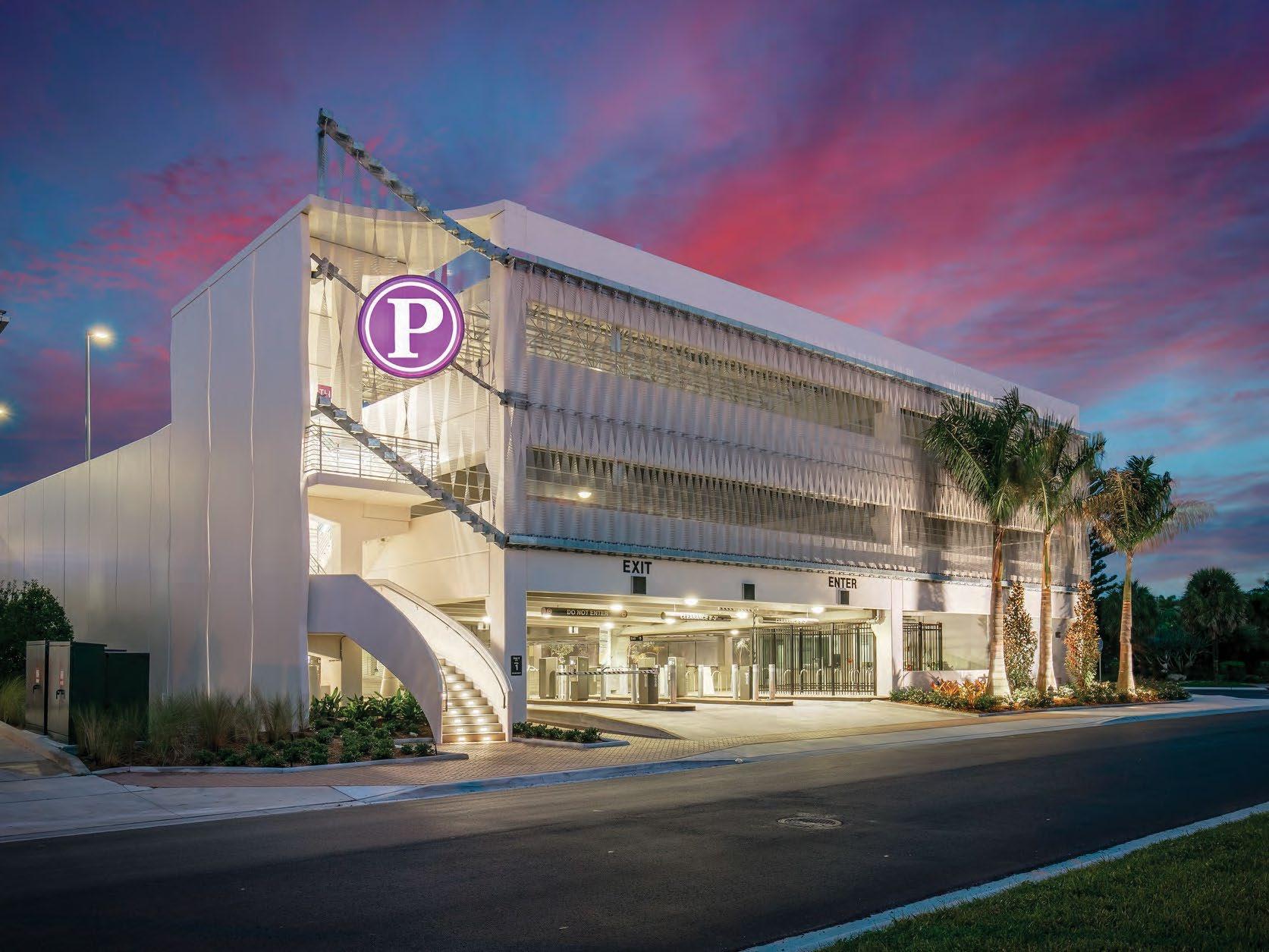


Kimley-Horn and Associates, Inc. kimley-horn.com/parking 919.653.6646
In the specific case of parking authorities, by their semiautonomous structure, they can issue bonds or enter a publicprivate partnership (P3) agreement to reduce the debt burden and risk. When public entities struggle to find funding to retrofit or redevelop decaying infrastructure, public-private partnerships offer a limited-risk and financially responsible alternative to deliver a safe and appropriate infrastructure that meets the community’s needs.
These original MPA facilities were built in the twentieth century when most major civil projects were developed in the United States. Built about five decades ago, the garages had reached the end of their lifespan. While over time, the Authority has adequately maintained and made safety upgrades, there came a time when these investments fell prey to the law of diminishing returns, and a decision had to be made.
MPA parking garages, built in the 1970s, could not anticipate the seismic population growth, traffic demand, and construction boom that has dramatically reshaped the Miami urban ecosystem. The demographic shift and rapid growth in Miami’s urban core have stressed these facilities and increased the service demand. As a semi-public entity, MPA is responsible for anticipating these trends, keeping pace with, and responding to, the public demand for adequate services.
Against the backdrop of a temperamental global economy, Miami’s financial resilience and outlook are steady, fueled by the relocation to the city of technology and financial giants, significant investment in sports teams, and a burgeoning Miami art ecosystem. This flourishing outlook gave MPA the impetus to redevelop these garages in the heart of the urban core.
These two garages will become premier mixed-use developments that will expand the parking and housing footprint and offer retail and other amenities to meet the demand of the current and projected downtown residents. Since these projects will be built close to various transit modalities, they are expected to enhance these transit-oriented neighborhoods by providing the public with connectivity and mobility options.
As the demographic of urbanized cities changes, parking organizations must recognize the need to identify financing instruments that support micro-mobility initiatives that optimize the customer experience, close the first- and last mile, and increase walkability. While each city has its unique characteristics, this strategy could work well in any major urban area to help reduce traffic congestion, boost sustainability, and respond to the demand and expectations of the public.
To wit, MPA is currently funding in its totality the Freebee, an automated, low-speed public shuttle. To incentivize its customers, the Authority offers a 50 percent discounted rate in
its garages to users who park and hop on the Freebee to go to their destinations. In so doing, MPA is helping close the first- and last mile, reduce traffic congestion, and enhance connectivity in the urban core.
The Authority is also funding and deploying a network of electric charging stations to support these modalities. In essence, MPA supports the city of Miami as it transitions to a more electric mobility ecosystem.
While the Authority fully funds these two initiatives, once the new mixed-use projects come to life, it may be necessary to identify alternative funding sources to help expand the mobility footprint near them. In the future, the Authority could explore ways to collaborate with the Miami-Dade County Transportation Planning Organization (TPO) to identify initiatives that could connect bicycles and pedestrians to micro-mobility options. The TPO’s Miami-Dade 2045 Bicycle/Pedestrian Master Plan focuses on projects that can safely connect bikers and pedestrians to their destinations, such as educational institutions, major medical facilities, large employment centers, and outdoor recreational locations.

It is well chronicled that as much as the parking business is experiencing a tectonic change due to technological advances, so are large, urbanized cities across the globe. Cities all over the world are facing exponential population growth. More than half of the world’s population now lives in towns and cities, and by 2030 this number will swell to about 5 billion. (Source: United Nations Population Fund). This demographic shift will require innovative funding sources to underwrite transportation modalities that swiftly move people and goods to and from their destinations safely and reliably.
Anticipating these trend lines, MPA looks forward to working closely with the TPO to seek its advice, support strategic approaches, shape policies, and strengthen mutually beneficial collaborations to fund mobility projects that will enhance the quality of life of the local communities.
The United States’ infrastructure is the cornerstone of the nation’s economic vitality and progress. As new technology continues to emerge and shape the parking and mobility sectors, creative funding sources and financing instruments will be necessary to meet the needs of the public and improve the quality of life in future urban environments. ◆
BOARD PERSPECTIVE 6 PARKING & MOBILITY / SEPTEMBER 2023 / PARKING-MOBILITY-MAGAZINE.ORG
ALEJANDRA “ALEX” ARGUDIN is the Chief Executive Officer of the Miami Parking Authority and Chair-Elect of the IPMI Board of Directors. She can be reached at aargudin@miamiparking.com
FRICTIONLESS CAMERA-BASED PARKING
/ Hybrid Parking - Ticketless for the Masses, Tickets for a Few

Digitalize your parking with License Plate Recognition*

Hybrid Parking
Ticketless Parking
Free Flow Parking
*Scheidt & Bachmann Global LPR Partners Quercus Survison

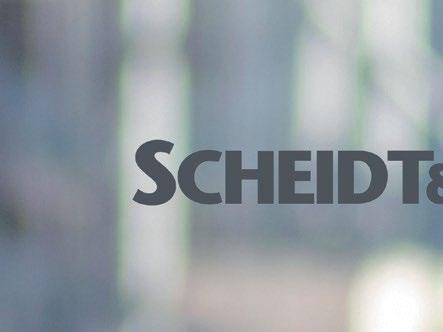


Scan for contact request





Scheidt & Bachmann USA, Inc.
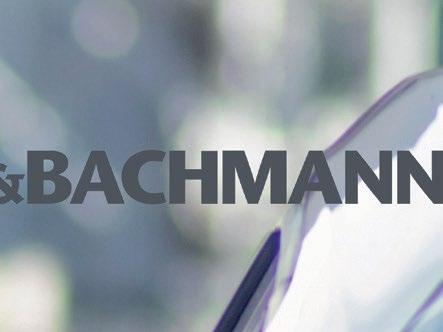
Scan to learn more


A Revenue Gateway EV Charging Opens the Door to New Revenue Possibilities.
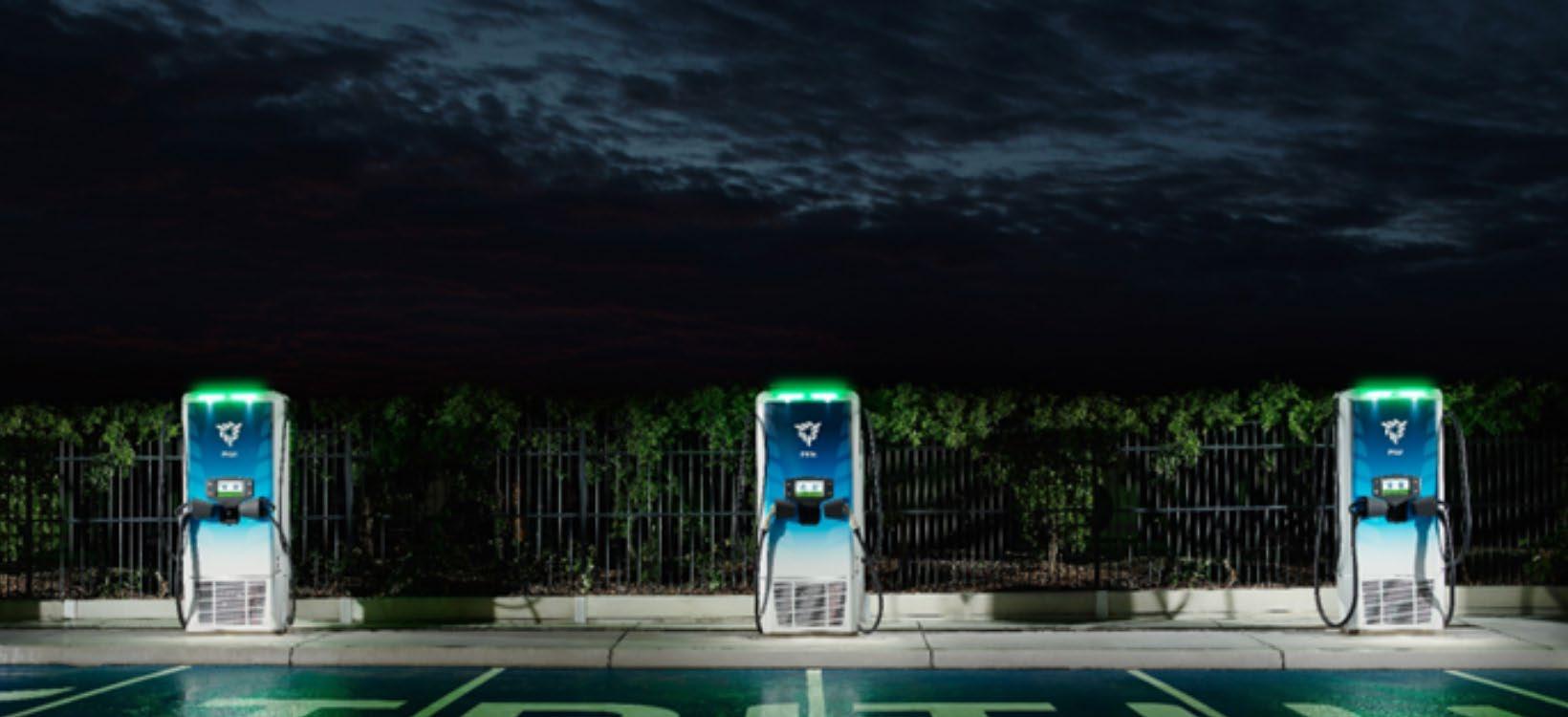 By Jim Burness
By Jim Burness
AT FIRST GLANCE, capturing revenue from EV charging seems simple and straightforward. Drivers plug in, and you charge them for the energy they use. This fee usually covers the cost of the electricity and a small profit for you. Yes, this is all true; however, it is just a piece of the larger revenue pie. Adding EV charging to your property—whether retail, hospitality or even multifamily—opens the door to even more earning opportunities at the charger and beyond.
Expanding Your Audience
In the charging world, revenue is a volume game. If only one driver uses your station, the financial yield is low. Advertising that you have charging and putting your stations ‘on the map’ via apps are great ways to draw more EV owners to your location. Similarly, hotel owners and multifamily properties are leveraging different tools like booking.com and apartments. com, which have filters designed to highlight EV charging amenities, drawing in additional users.
Another option is to tap into the electric rideshare movement. Both Lyft and Uber are investing in electrifying their fleets. Lyft has an entire program that encourages their drivers to shift to electric, touting fuel and maintenance savings. Their
studies have also shown that EV riders are more generous tippers, and their EV drivers earn 25% more in tips per ride.
What does this mean for you? The bottom line is that these growing fleets need a place to fuel up, and what better place than your location? And with the networking software on many charging stations today, it is easy to promote repeat business with special pricing for different audiences, like rideshare drivers.
Similarly, if you have extra space in your parking lot, you can lease it out to car-share companies like Turo or Zipcar. There is even a federal program through the Department of Energy you can tap into, and for those with electric cars, this provides yet another revenue opportunity for your stations. Screenshot from apartments.com

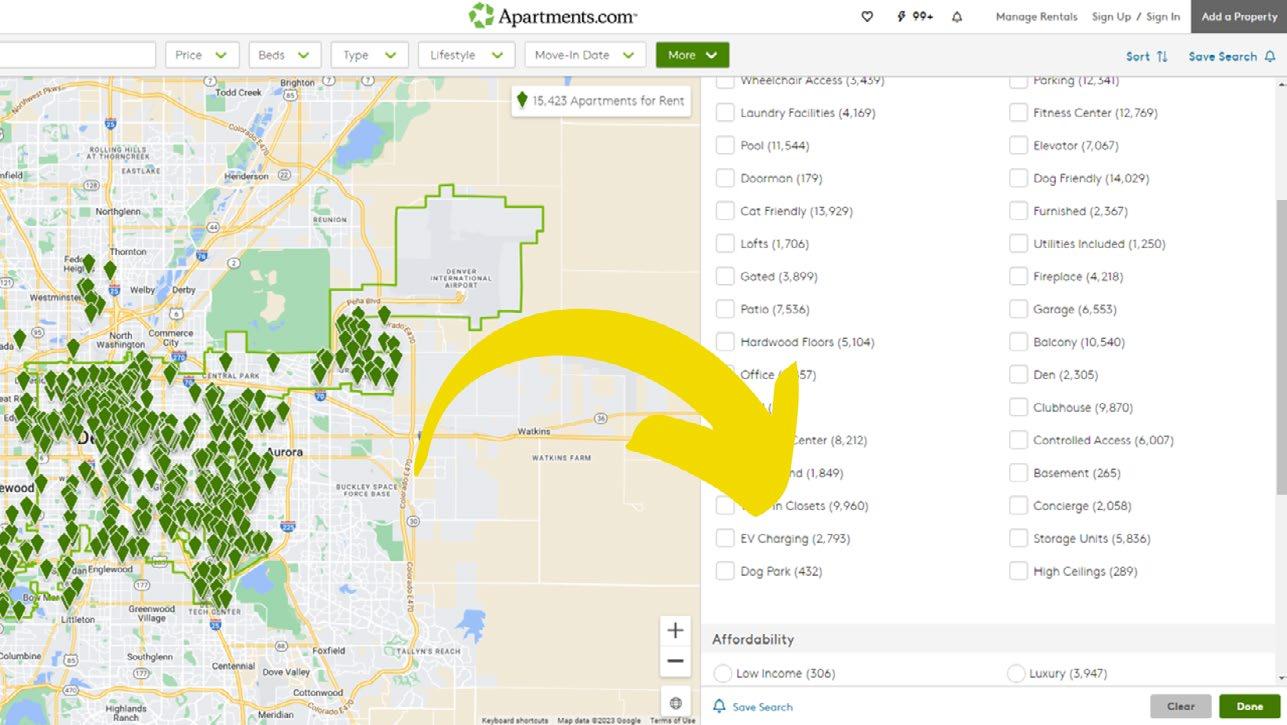
INNOVATION & TECHNOLOGY
8
Screenshot from booking.com
Premium Amenities
EV charging also allows you to add additional value and/or level up your existing amenities. For example, if your parking garage or hotel offers car washes, detailing, or putting air in vehicle tires, it’s super easy to add electric fueling to the list of services (and there are no EPA hassles or regulations, nor does your team need to leave the property). Your customers are already conditioned to pay for add-on services and will easily tack on a small premium to ensure their ‘tank’ is full. And even if you don’t charge for these services, the mere fact that you have them can increase your customer base, build customer loyalty, and be a differentiator for business.
This same concept applies to multifamily space. Multifamily properties are unique; many have residentonly parking and visitor parking, often with the former behind the fence or limited access. As previously mentioned, most chargers today can be equipped with software allowing for different pricing structures and access for each audience you serve. For example, you could charge your visitors a premium for charging access.
Similarly, if your residents do not have individual charging stations, you can charge a premium for anyone who fuels longer than their allotted time (specific time increments can be set via the software),
charge at “prime” times, or if they opt not to move their car once it’s full. Most smart stations can detect if a car is full and can automatically apply a fee after the grace period.
Studies have also found that EV drivers are willing to pay a premium for faster charging via DC fast chargers (DCFC), which fuel in minutes versus hours like their level-2 counterparts.
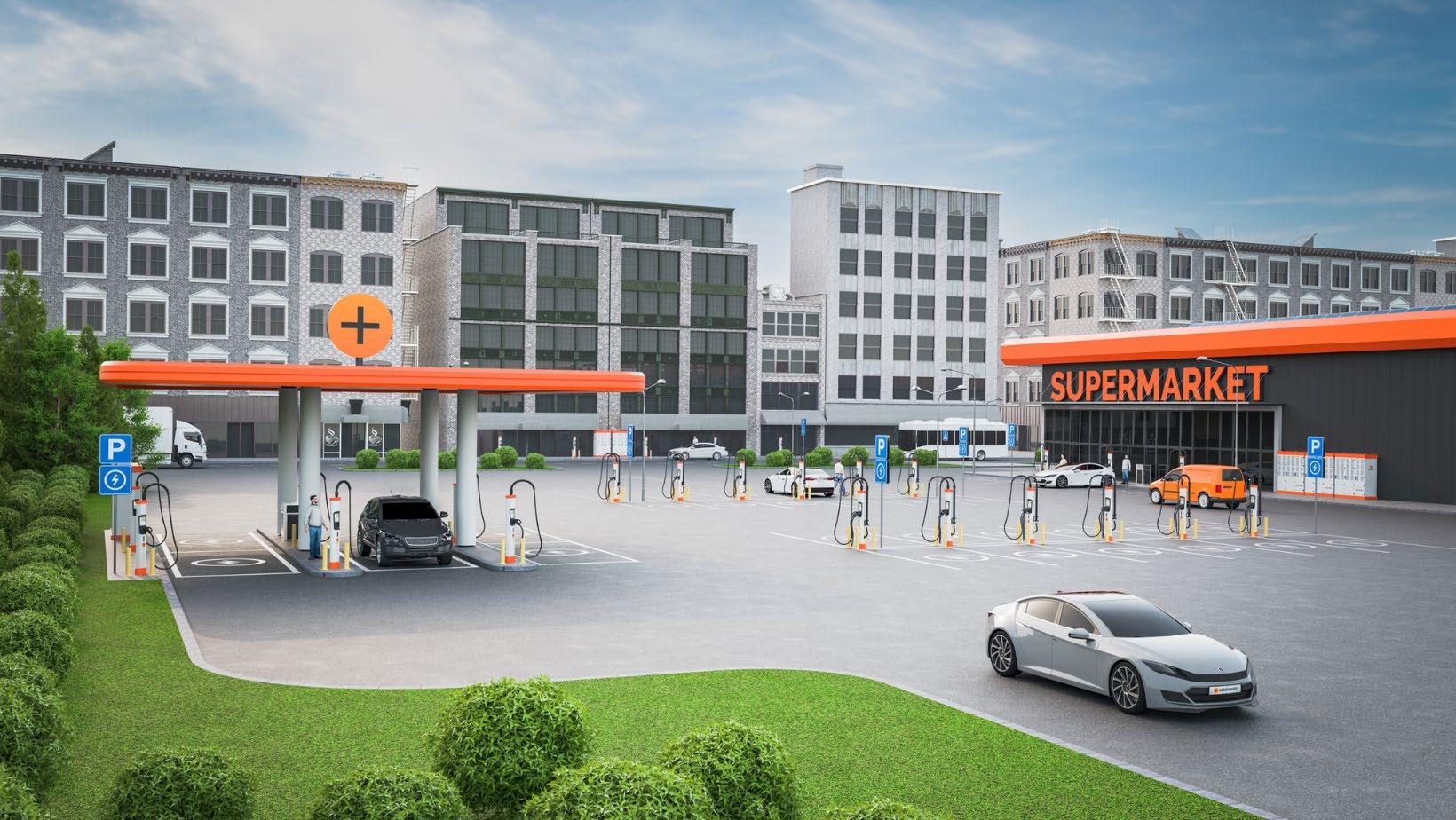
Building Loyalty and Business Revenue
Up to this point, we’ve talked about the ‘at the charger’ revenue potential, but we haven’t yet addressed the impact EV charging can have on your overall business. I like to say, “Just because I don’t buy gas anymore, it doesn’t mean I don’t still like potato chips.” The point is, even though I use a different fuel, I am still a hungry consumer.
For C-store owners, this is critical. In 2022, EV sales crossed over the 5% adoption rate threshold, meaning there’s no turning back. As Ernst & Young’s Steve Patton shared, “...this year’s data demonstrates that the U.S. is at a true precipice when it comes to mainstream EV adoption. We can expect to see more EVs, both commercial and consumer, on the road.”
For C-stores with gas pumps, this doesn’t just mean a loss of fueling revenue, it also equates to less sales at retail. Thus, dual pathing is a smart strategy. Not
PARKING-MOBILITY-MAGAZINE.ORG / SEPTEMBER 2023 / PARKING & MOBILITY 9
only does this allow them to capture electric fuel sales (which has a higher profit margin), it creates more retail sales opportunities with more charging dwell time.
Research reveals that EV drivers tend to have higher incomes and spending power. In 2022, a popular EV charging network surveyed its users and found charging stations were a clear destination for EV drivers, and they typically spent about $1 a minute shopping while they charged. (The average DCFC charging session is between 30-40 minutes.)
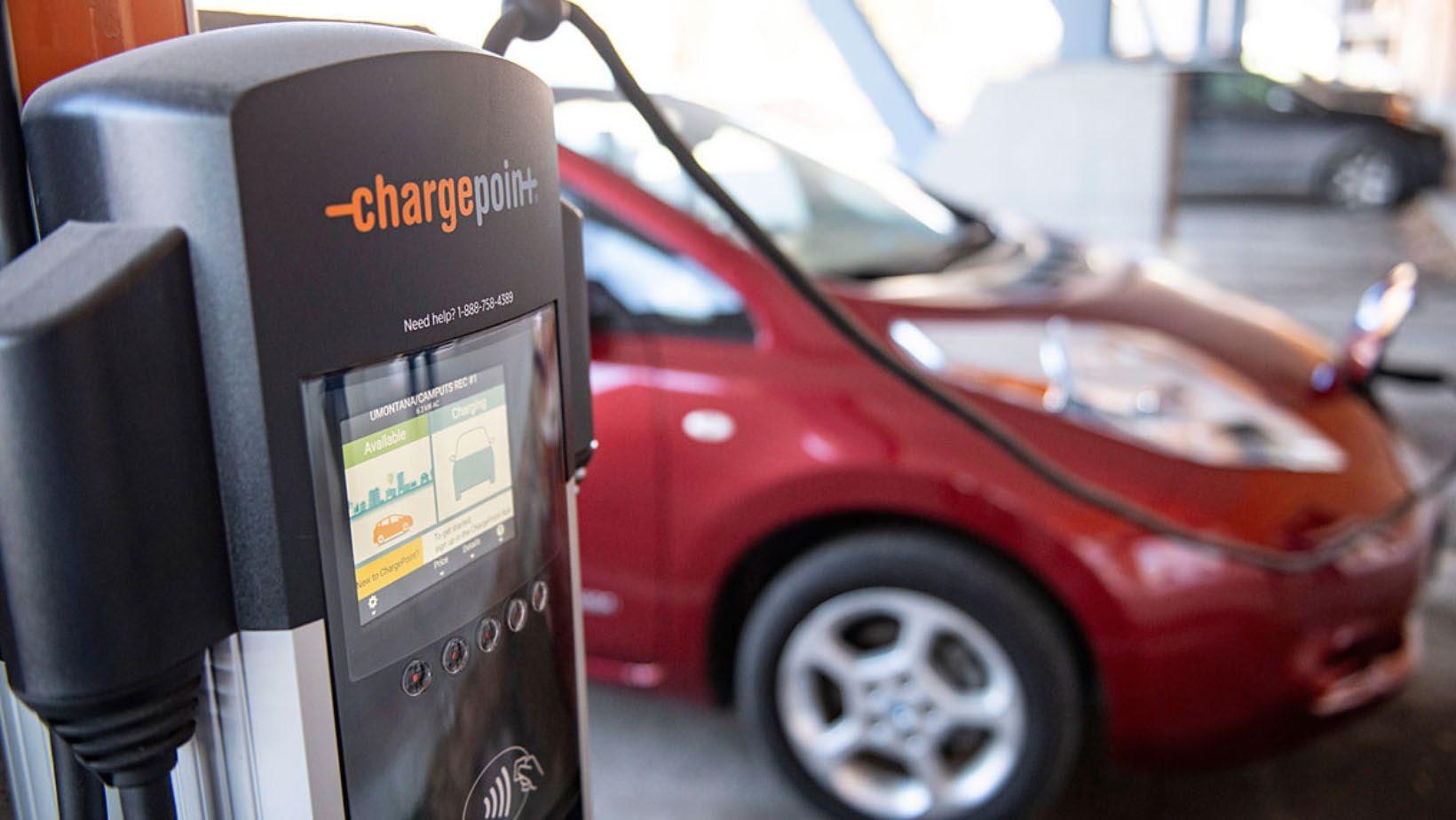
A 2019 study found that EV drivers were also more loyal. 81% of the 700+ EV owners polled agreed and confirmed their spending increased while charging. One respondent said, “We’ve spent way more money eating at restaurants with charging stations than we ever would have spent on gas.” Another reported, “It’s the convenience. I’m there, and I will explore (translation: spend money) at walkable businesses.”

All of this proves the revenue potential of charging surpasses what you would have expected.
The Key to this Success is Ownership
One last consideration. Your success with any of these opportunities is deeply rooted in your control of the stations on your property. While the idea of getting free stations through a third party sounds appealing,
it quickly limits how you can unlock and expand your station’s revenue potential—in other words, they prevent you from filling your pockets.
Third-party providers make their money through what they earn at the station. These earnings often need to cover the cost of electricity, the rent for the land they sit on, and all the station upkeep and maintenance, leaving very little, if any, revenue for you and nearly no room for you to expand that income stream.
Further, to cover these expenses, these providers frequently charge higher than average rates which discourages use, eliminates loyalty, and impedes repeat business - all of which can directly impact your business’ traffic, especially as EV ownership takes off.
Historically, this model has led to unserviced, broken stations, leaving you with little recourse. By owning and operating the stations, you can avoid these challenges, optimize earning potential, and control your property’s customer (or resident) experience. And we all know happy customers tend to be more loyal and spend more. ◆

INNOVATION & TECHNOLOGY 10 PARKING & MOBILITY / SEPTEMBER 2023 / PARKING-MOBILITY-MAGAZINE.ORG
JIM BURNESS is CEO & Founder of National Car Charging & Aloha Charge, and is a member of the IPMI Accessibility Working Group. He can be reached at jburness@nationalcarcharging. com.
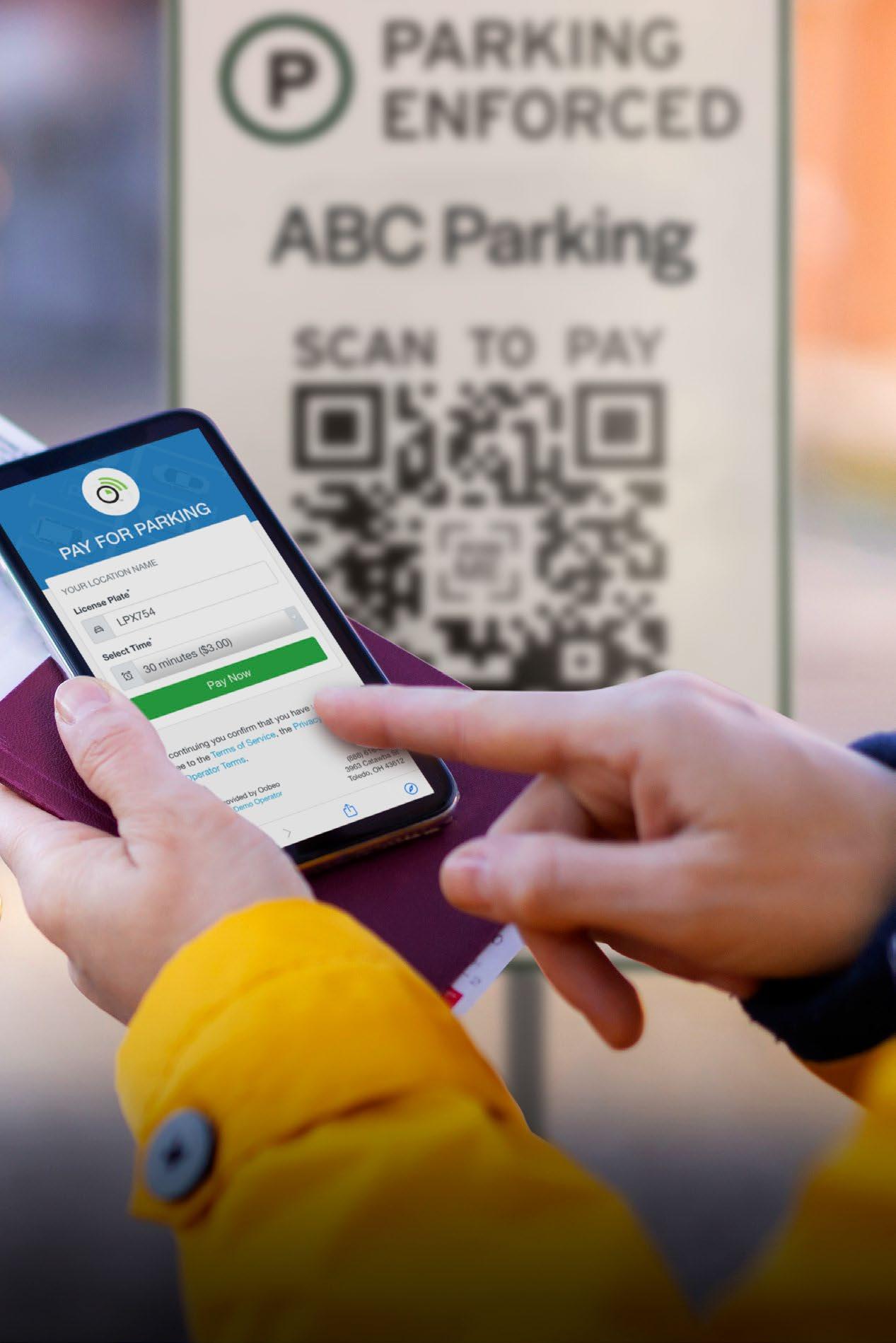

Toledo Ticket Technologies toledoticket.com 800.533.6620 TOLEDOTICKET.COM I 1.800.533.6620 • OOBEO.COM I 888.616.6236 VALET PERMITS WAYFINDING VALIDATIONS Toledo Ticket Technologies Customized solutions for your ticketing needs since 1910. OOBEO Customized digital parking solutions since 2018. Your leader in parking and ticketing solutions. MOBILE POINT OF SALE SELF PARK PARKING AND MOBILITY
You Are Enough Embrace the Confidence to Take a Chance on Yourself
 By Heather Matthews, CAPP
By Heather Matthews, CAPP
MANY WOMEN HAVE EXPERIENCED THE FEELING OF HESITANCY when it comes to applying for a job, promotion, or new opportunity. This reluctance often stems from the belief that they are not fully qualified for the role, even when their skills and experience make them a suitable candidate. This phenomenon is known as the “confidence gap,” which can harm women’s careers and professional growth. It’s crucial for women to overcome these self-doubts and apply for roles, even if they don’t match all the qualifications.
The job market is competitive, and it’s not uncommon for women to feel hesitant about applying for positions if they don’t believe they meet all the qualifications. This hesitation can stem from a lack of confidence or a fear of failure. However, it’s essential to recognize that nobody is perfect, and checking every box for a role is impossible. With the right mindset and the belief that you are enough, you can overcome these feelings and confidently apply for jobs even if you don’t meet all the qualifications.
Embrace the Reality That Nobody Is Perfect
Perfectionism can be a significant hindrance, especially when applying for jobs. It’s important to remember that no candidate is perfect, and employers are aware of this. They are looking for someone who can grow and adapt to the role, not someone who already knows everything. Embrace your strengths and be proud of what you bring to the table, knowing that you can learn and grow in any position.
Understand That Qualifications Are Often Flexible
Job descriptions can be intimidating, but they are not set in stone. Employers often list a range of qualifications to cast a wide net to attract a diverse pool of candidates. While you may not possess every skill listed, you might have other strengths that make you an asset. Highlight your unique skills and experiences in your application, and trust that your potential will shine through.
Focus on Your Transferable Skills
You may not have the exact experience listed in the job description, but that doesn’t mean you don’t have valuable skills to offer. Focus on your transferable skills, such as problemsolving, communication, leadership, and adaptability. By demonstrating your ability to apply these skills in a new context, you’ll show employers that you can learn and grow in the role.
Remember the Importance of Soft Skills
While technical skills are crucial, soft skills are equally important. These skills, such as teamwork, communication, and emotional intelligence, can be just as valuable to an employer as specific qualifications. Make sure to emphasize your soft skills in your application and during interviews, as they can make you stand out from the competition.
DIVERSITY, EQUITY, & INCLUSION
12 PARKING & MOBILITY / SEPTEMBER 2023 / PARKING-MOBILITY-MAGAZINE.ORG
Build Your Confidence Through Networking and Mentorship
Networking and mentorship can be powerful tools for building confidence and expanding your knowledge. Connect with people in your industry and seek out mentors who can offer guidance and support. These relationships can provide valuable insights, encouragement, and connections to help you feel more confident when applying for roles.
Remember That Rejection Is a Part of the Process
Fear of rejection can hold you back from applying for jobs, but it’s crucial to remember that rejection is a normal part of the process. Every successful person has faced rejection at some point in their career. Instead of seeing it as a failure, view it as a learning experience to help you grow and refine your approach for future opportunities.
Understanding the Confidence Gap
The confidence gap refers to the disparity between men and women regarding self-assurance, specifically regarding their capabilities and qualifications. Research has shown that women are less likely to apply for roles if they do not meet 100% of the qualifications, whereas men are likely to apply if they meet just 60% of the requirements. This gap can result in fewer opportunities for career advancement and growth for women.
Strategies to Build Confidence and Apply for Roles

● Recognize your worth: Understand that you bring value to any role with your unique experiences, skills, and perspectives. Be proud of your accomplishments and know you deserve new opportunities.
● Embrace the learning curve: Realize that no one is ever fully prepared for a new role, and learning is part of the process. Focus on your ability to adapt, learn, and grow in the position rather than dwelling on the qualifications you may lack.
● Develop a growth mindset: Adopt the belief that your abilities can be improved through dedication and effort. Embrace challenges as learning opportunities, and see setbacks as a chance to grow and refine your skills.
● Seek mentorship and support: Connect with other
women who have faced similar challenges and learn from their experiences. A strong support network can provide invaluable guidance, encouragement, and advice.
● Practice self-compassion: Be kind to yourself when you experience self-doubt or setbacks. Acknowledge that everyone faces challenges and that sometimes it’s natural to feel unsure.
● Focus on your strengths: Instead of dwelling on the qualifications you lack, concentrate on the skills and experiences that make you a strong candidate. Highlight your unique attributes that will help you excel in the role.
● Break down the requirements: Analyze the qualifications listed in the job description and determine which ones are essential and which ones can be learned or developed on the job. Remember that job postings are often an idealized version of a candidate, and most employers are willing to hire someone who may not meet every qualification but has the potential to grow and succeed in the role.
● Take action: Push through self-doubt and apply for the role, even if you don’t meet all the qualifications. Remember, you miss 100% of the opportunities you don’t pursue.
Overcoming the confidence gap is essential for women to thrive and advance in their careers. By recognizing their worth, embracing learning opportunities, and focusing on their strengths, women can build the confidence needed to apply for roles, even if they don’t match all the qualifications. Ultimately, this will lead to more diverse and inclusive workplaces that benefit everyone.
Believing in yourself and recognizing that you are enough is the first step towards confidently applying for roles, even if you don’t meet all the qualifications. Embrace your strengths, focus on your transferable and soft skills, and remember that rejection is a part of the process. By adopting this mindset, you can overcome your hesitations and pursue the career opportunities you deserve.
◆
PARKING-MOBILITY-MAGAZINE.ORG / SEPTEMBER 2023 / PARKING & MOBILITY 13 STOCK.ADOBE.COM / DIZAIN
HEATHER MATTHEWS, CAPP, PMP , is the Founder of Women Industry Leaders and Savvy Gal Technical Solutions. She can be reached at heather. matthews@savvygaltech.com.
Incentives for Creating Green Infrastructure
By Madison Bordon
IF YOU’VE CONSIDERED ADDING ELECTRIC VEHICLE (EV) charging stations to your location(s), the time is right! Financial incentives in the form of federal, state, and utility grants and programs are designed to help promote the adoption of EVs by creating public and private park-andcharge spaces.
The Bipartisan Infrastructure Law includes up to a $7.5 billion investment in electric vehicle charging designed to help create a national interstate network of convenient, reliable, and accessible charging stations. Two programs within this initiative are the National Electric Vehicle Charging Formula Program or NEVI ($5 billion) and the Discretionary Grant Program for Charging and Fueling Infrastructure or CFI ($2.5 billion).
The NEVI program has requirements for potential applicants, including location along designated FHWA Alternative Fuel Corridors (AFCs), nonproprietary charging stations, allowing for open-access payment methods, stations must be publicly available, offer 24/7 lighting and amenities such as food and bathrooms. The program helps to underwrite 80% of the purchase and installation of DCFC fast chargers, which can fully charge an EV in 15 to 30 minutes. Additional requirements call for American-made chargers, 97% station uptime, data reporting, and a five-year maintenance contract for the stations.

The CFI program is a competitive grant program designed to “strategically deploy publicly accessible electric vehicle charging infrastructure as well as hydrogen, propane, and natural gas fueling infrastructure along designated Alternative Fuel Corridors or in other publicly accessible locations.” Of note is that “at least 50% of CFI funding must be used for a community grant program where priority is given to projects that expand access to EV charging and alternative fueling infrastructure within rural areas, low- and moderateincome neighborhoods, and communities with a low ratio of private parking spaces.”
Beyond these two large federal programs, dozens of state and utilitybased funding programs, including a few states (NY, GA, WA), offer tax incentives. Full turnkey EV charging companies will often assist with identifying and helping to procure funding for infrastructure projects such as installing stations. Often, funding specialists can identify and utilize several funding opportunities for a single project (stacking).
Check with your local utility to see if they offer an EV Make-Ready Program and/or a Charge-Ready Program. These programs “support the development of electric infrastructure and equipment necessary to accommodate an increased deployment of EVs by reducing the upfront costs of building charging stations for EVs.” Make-Ready programs are designed to defray the costs of preparing a site, including site preparation and electrical infrastructure. Charge-Ready programs help pay for the actual charging equipment, either Level 2 or Level 3 chargers. Not all states offer these programs, but other funding opportunities are often available which serve similar purposes.
One of the biggest considerations when planning charging infrastructure is access. Are your lots public or private? This matters because funding programs tend to favor public access, and generally fund private installations at 50% of the public funding Level.
The other important consideration for your location is dwell time. How long do your patrons park? Is it an eight-hour workday or overnight lot, or a short-stay downtown or retail-adjacent lot? Dwell time informs
THE GREEN IMPACT
Liz Graffunder, Livingston Energy Group Field Service Technician, installs EVSE hardware
14 PARKING & MOBILITY / SEPTEMBER 2023 / PARKING-MOBILITY-MAGAZINE.ORG
and helps determine the appropriate Level of EV chargers for your customers. Level 2 chargers are a good choice for workday or overnight lots as they fully charge a vehicle in approximately eight hours. Level 3 DCFC fast chargers that can fully charge a vehicle in 15 to 30 minutes make sense for short-term parking, such as entertainment venues, downtown lots, and retail parking.
When planning your site installation, the location and proximity to electric service (utility) factor into the make-ready price. There’s a considerable price difference between Level 2 and Level 3 chargers. For Level 2 chargers, the cost ranges between $2,000–$5,000 per station; for Level 3 chargers, the cost is between $40,000 and $65,000—with funding incentives and tax breaks substantially helping to offset these costs.


Like NEVI and CFI, most funding programs have requirements including Made in America, utility certification, and uptime. This last consideration can be adversely affected in subterranean

parking locations, where poor connectivity can diminish uptime to fall outside of the required percentage.
“Our advice to those interested in installing EV chargers is to partner with a full-service EV charging company that can help you determine an appropriate solution for your location and navigate the myriad funding opportunities available from federal, state, and utility programs,” says Will DeRuve, VP of North American Sales at Livingston Energy Group. “Finally, look for a total package that includes servicing and maintaining your stations and providing the required data reporting to the funding sources.”
◆
PARKING-MOBILITY-MAGAZINE.ORG / SEPTEMBER 2023 / PARKING & MOBILITY 15
MADISON BORDON is the Incentive Programs Manager for Livingston Energy Group. She can be reached at mbordon@solution.energy
The Value of Budget Planning
By Lisa Copeland, CAPP, PMP, CUFM

AS WE ARE PREPARING FOR THE ONSET of another fall semester at Old Dominion University, we are also fresh into a new budget year, anxiously awaiting to hear the final budget decisions.
Budgets are critical to running a business operation and therefore should be recognized as an on-going function and not simply a once-a-year exercise. Equally important to the budget process is the engagement of the management team in the planning and the continuous maintenance of a budget. A budget serves as an organization’s financial roadmap.
Budgets serve as a foundation for making strategic business decisions. The benefits of implementing a well-defined budget plan include money management by tracking performance; informed decision making; appropriate allocation of funding for operating requirements and capital projects; and problem identification where there may be an inefficiency in the operation.
Creating an effective budget will facilitate strategic business decisions which aid in reaching operational goals.
● Gather and analyze data from current and historical financial statements. Were the projections on target?
● Form objectives and develop strategic goals to
provide the framework for planning a budget.
● Meet regularly with cross-functional work areas to ensure all contributing factors are considered when establishing an accurate and effective budget plan.
● Create a preliminary budget; review it; and revise it until you have an effective and fiscally responsible budget that meets pre-determined objectives and strategic goals.
Budget planning is a series of hurdles, each one getting you closer to the finish line. It is important, however, to monitor the operation’s progress as the budget period jumps its financial hurdles. Budget planners and stakeholders should regularly review the current position of the budget to ensure the organization is making the mark. Operating in the black is a fiscally sound practice for crossing the finish line.

THE BUSINESS OF PARKING Financial
◆
16 PARKING & MOBILITY / SEPTEMBER 2023 / PARKING-MOBILITY-MAGAZINE.ORG STOCK.ADOBE.COM / JIRAPONG
LISA COPELAND, CAPP, PMP, CUFM, is the Business Operations Manager for Old Dominion University. She can be reached at lcopelan@odu.edu
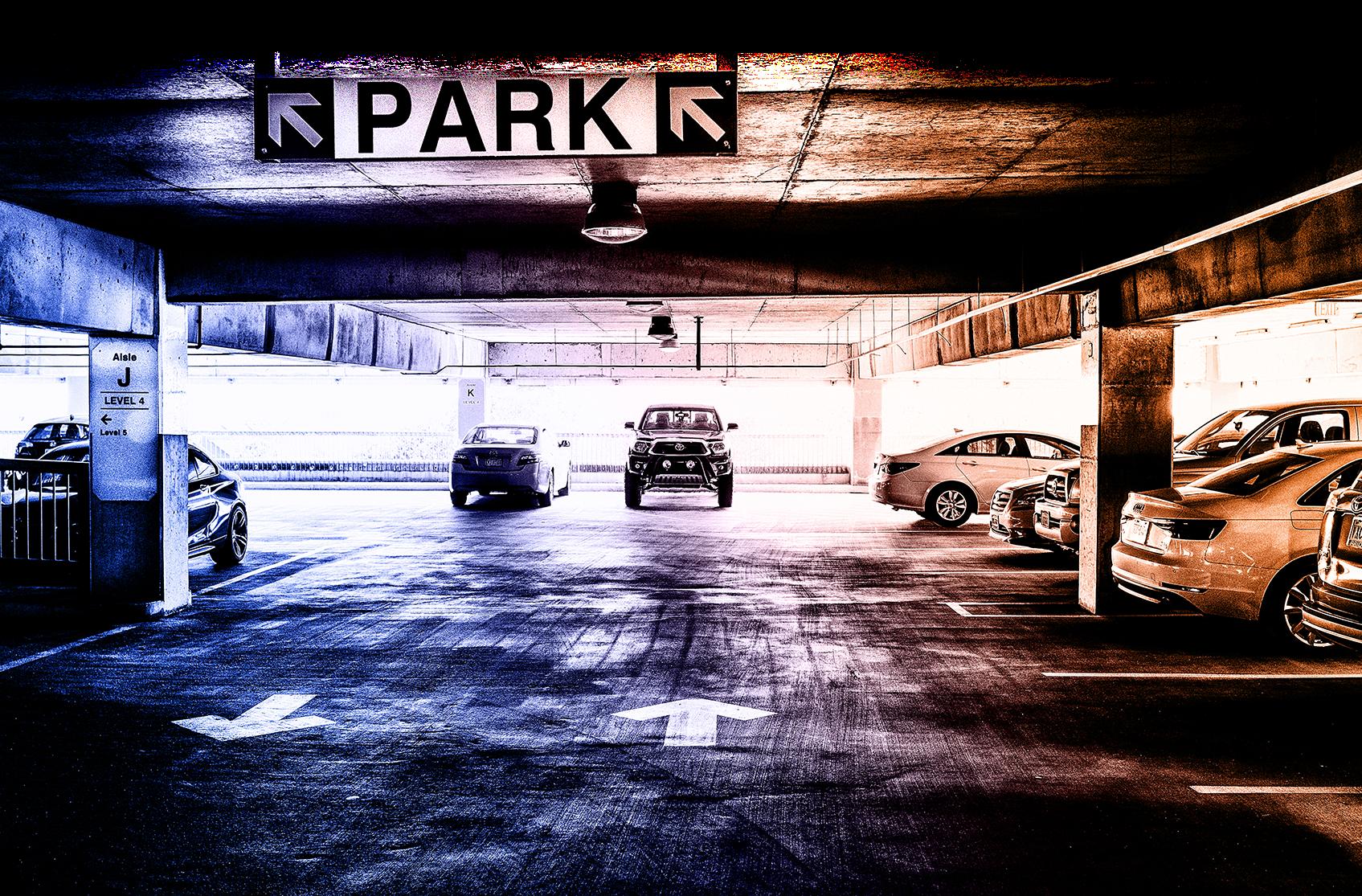



T2 Systems, Inc. t2systems.com SCAN, PAY, GO. Contactless Convenience for Your Customers T2Systems.com | 1.800.434.1502
Insights into Fundraising in the Parking Sector
By Ethan Glass
IN 2021, global venture capital investment reached a record $621 billion, increasing over 100% from the previous year. However, in 2022, venture capital investment slowed to $445 billion due to macroeconomic factors such as rising interest rates and inflation. And according to a report by EY, venture capital investment is expected to fall to $380 billion in 2023.
Nevertheless, this does not necessarily indicate a slowdown in innovation, especially in the parking and mobility sector.
Although the VC fundraising landscape has cooled down, companies have been able to rely on other modes of funding.
While building Ocra, we have explored many different ways to raise capital, from the earliest stages to the present, having just come off a successful oversubscribed fundraise.
Four years ago, I was living in a crowded and rundown apartment close to the LA Coliseum, selling near-venue parking spots with cardboard signs. During those days, I would pitch almost any VC possible to buy into our vision. At the time, it was difficult not to follow the headlines of companies raising millions, leading me to question what we were doing wrong.
It was challenging to text my co-founder that a pitch went great, only to inform him a few days later that the investor had “passed.” The idea of “traction” became an obsession after constantly hearing that we didn’t have it, and we couldn’t help but fall into the naive trap of doing whatever it took to please an investor while trying to build the business.
For example, an investor would say:
● At least one founder needed to be full-time, so I would grind 100+ hours a week.
● We needed a proof of concept, so we would build a mobile app MVP.
● We needed a few early customers, so we would sell a few customers.
Here’s what they didn’t say: Doing everything just for investor metrics doesn’t mean that the investor will wire money.
Ironically, the best thing that happened to the business was not raising the capital we were eager to raise. Had we received the capital we were seeking ($250k at the time), we would have forced a model that ultimately would have deterred us from our first breakthrough moment. We also would not have learned the important lesson of raising the right capital for our business, not just the available capital.
Today, we are offered investment in return for equity almost weekly.
For companies raising capital today, the CEO should craft a daedal fundraising strategy to raise money from individuals and/or firms that will be value-add shareholders. It is important that there is more value coming from the investor than just putting cash in the bank. Additionally, the CEO should always monitor cash flow and curate a pipeline for more funds to be injected into the business when necessary.
Areas outside of venture capital that Ocra has raised capital from include but are not limited to crowdfunding/advance selling, grants, and strategic partnerships.
Crowdfunding/Advance Selling
While the SEC’s changes to Reg CF and Reg A+ over the past five years have transformed the utilization of equity crowdfunding, in this article, I’d like to focus on another form of crowdfunding: advance selling.
Advance selling may be one of the best ways to raise nondilutive capital. This crowdfunding technique involves the company selling its product or service before its initial release. Here are some of the benefits of advance selling:
● For software companies, offering an annual or multi-year subscription at a discount can create alignment between the buyer and seller, both of whom benefit from the transaction.
● It sources early customer feedback that can be used to improve the product or service before its release.
● It builds a community of early adopters and champions who will boost your Net Promoter Score (NPS) and open doors for new customers.
Grant Funding
This is another way to inject non-dilutive capital into a business that can present positive signals to customers, employees, and even investors.
Several websites can be utilized to routinely scrape grant databases so that companies can find related opportunities. Generally, no strings are attached when applying for and accepting a grant. But be sure to read the fine print thoroughly
LEADERSHIP MOMENT
18 PARKING & MOBILITY / SEPTEMBER 2023 / PARKING-MOBILITY-MAGAZINE.ORG STOCK.ADOBE.COM / IRINA STRELNIKOVA
when applying, as there may be specific qualifications one’s company must meet.
Large programs such as Small Business Innovation Research (SBIR) and Small Business Technology Transfer (STTR) can open a pipeline for follow-on grants upon successfully completing their initial grant.
Strategic Partnerships

This is typically dilutive, equity-based investing where the instruments look and feel extremely similar to venture capital.
It is common for the investing company to invest off their balance sheet or raise a fund to do so. I’ll preface that we may be biased on this fundraising mode, as it has been our primary funding source as a vendor-neutral company with a “Switzerland” mentality.
In our case, enabling individuals or companies from within the industry to invest has fostered further alignment, and we’ve benefited from value-adds specific to our industry.
Strategic partners have more incentive to drive value and growth by creating “1 + 1 = 3” opportunities because they share in the valuation upside and have a seat at the table.
Also, these investors typically understand the marketplace’s needs and can help introduce new customers and partners via their distribution channels.
These fundraising strategies are just a few ways to add capital to a business.
It’s also worth noting that debt is often a great fundraising instrument, but high-interest rates negate much of that value in the current market. With that, companies with cash in the bank can take advantage of the current market conditions by deploying numerous treasury management techniques. (That may also be a topic for another time, but we currently earn close to 5% on our cash.)
Diversifying modes of fundraising is often a successful tactic and presents more options for capital. Having more optionality enables a CEO to weigh the benefits and drawbacks of raising capital.
For this piece, we highlighted the benefits, but every action has a reaction, which rings true in fundraising too. I am happy to be a resource for anyone looking to raise capital and connect you with leaders who can share their wisdom, as they have graciously done with me.
Parking and Transportation
Planning
Parking Design and Consulting

Structural Engineering
Structural Diagnostics
Traffic Engineering
Civil Engineering
Intelligent Transportation Systems
Systems Integration
◆
Brian
ETHAN GLASS is CEO & Co-Founder of Ocra. He can be reached at ethan@getocra.com
ENHANCING MOBILITY
Lozano , PMP 800.364.7300
parking@walterpmoore.com walterpmoore.com
New England Parking Council
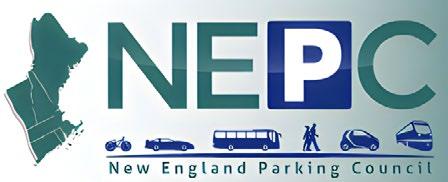 By Andrew Hill
By Andrew Hill
THE NEW ENGLAND PARKING COUNCIL (NEPC) is a 200+ member confederation of parking, transportation, and mobility professionals from municipalities, public agencies, colleges and universities, hospital and medical centers, private developers, product, and service providers from across Connecticut, Rhode Island, Massachusetts, Vermont, New Hampshire, and Maine. Current members include representatives from three Ivy League universities; 11 individuals from nationally recognized public higher learning institutions; managers for the transportation agency servicing the Boston metropolitan area; directors of public parking systems servicing nine major municipalities of over 100,000 residents; and executives from six world-class medical institutions.
in Portland, ME, in early June. Total attendance at these events was more than 300 people. Educational sessions covered a broad spectrum of topics, including electrical vehicle charging, the state of autonomous vehicle development, funding opportunities tied to the most recent Infrastructure Act, curb management, data management and integration best practices, and customer service.
The NEPC hosts three annual one-day educational forums to serve our constituents in the Municipal (Public), Healthcare, and Higher Education sectors at various regional locations, one two-day conference, a charity golf tournament, and occasional webinars. As a matter of practice, the location and date of these events vary each year to fairly serve our membership across a large geographic region and provide yearround opportunities for education and networking.
Most recently, the NEPC hosted a forum for colleges, universities, hospitals, and medical centers at Harvard University in Cambridge, MA, in October of last year; a forum for municipalities and public agencies in West Hartford, CT, in March of this year; and our annual golf tournament and conference
NEPC members like to play as hard as they work. All 19 of the teams participating in our 2023 Golf Tournament at Nonesuch River Golf Club took advantage of the air-driven cannon provided to improve their “drives” off the 10th tee. During our most recent conference, first time attendees and sponsors attended an opening night reception at Hadlock Field to watch the Portland Sea Dogs, AA affiliate of the Boston Red Sox, defeat the Akron Rubber Ducks. As a bonus, one of the NEPC’s Platinum Sponsors threw out the game’s first pitch! On the second night of the conference, more than 50 NEPC members turned out to try their hand at axe throwing while sampling the region’s top microbrews and Portland Pie Company pizza.
This year, the NEPC also introduced the Vanguard Award, recognizing members who have provided extraordinary leadership, innovation, and mentorship to the parking and mobility industry. Any active member can nominate a current or former NEPC member for the award; award winners are chosen based on their experience and contributions to the industry.

STATE & REGIONAL SPOTLIGHT
New England Parking Council
20 PARKING & MOBILITY / SEPTEMBER 2023 / PARKING-MOBILITY-MAGAZINE.ORG
Portsmouth NH Director of Parking Ben Fletcher tries out the “Golf Cannon”
NEPC Board of Directors:

BACK
Sean Woodbine, FLASH Parking, Andy Hill, DESMAN, Doug Hausladen, CAPP, New Haven Parking Authority, Carey Redd II, CAPP, New London Parking Authority, Suzanne Rinfret, City of Somerville, MA
FRONT
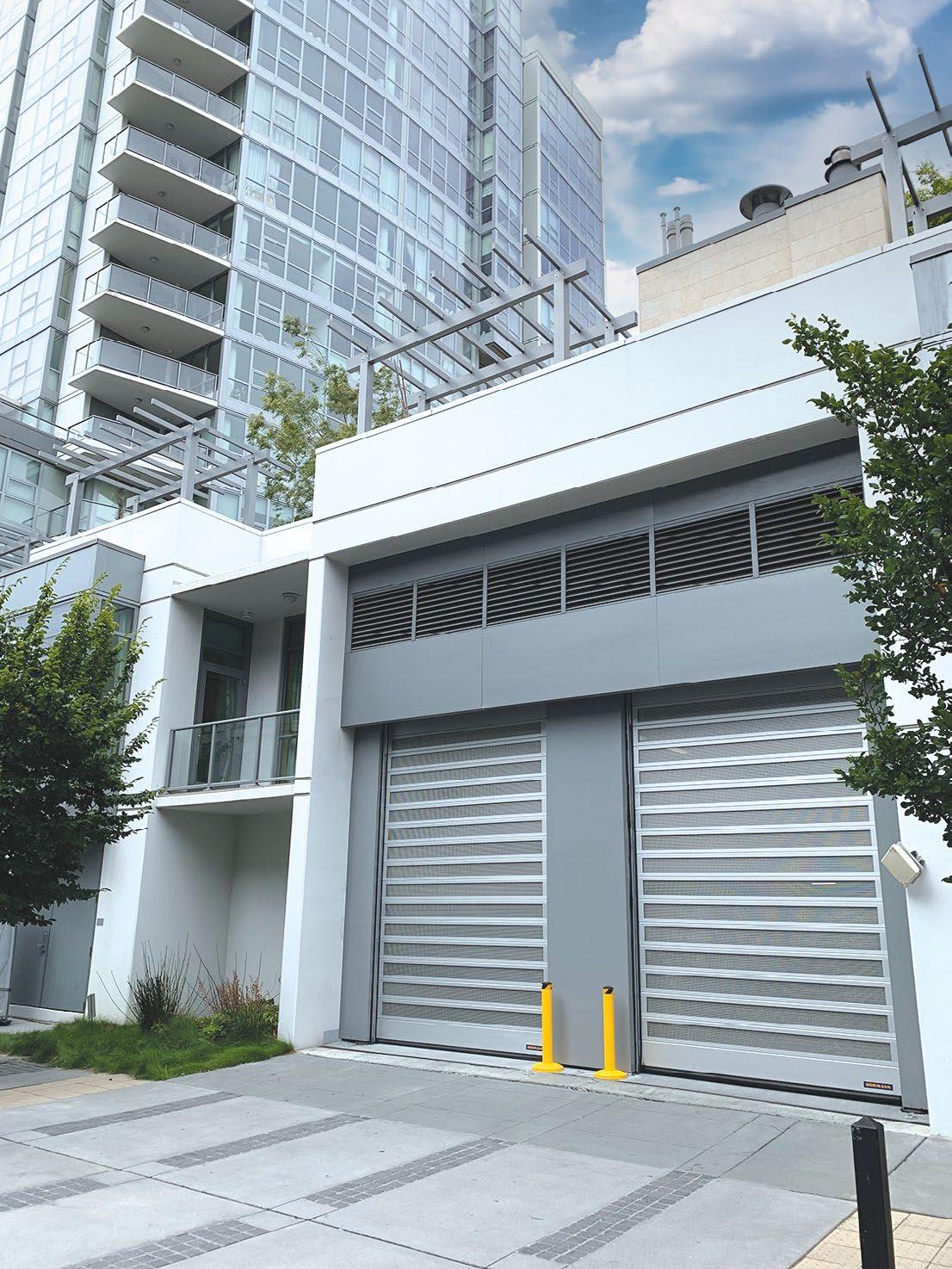
Stathis Manousos, LAZ Parking, Heather Matthews, CAPP, Savvy Gal Technology, Abigail Jobst, Walker Consultants, Tim Shaw, SP+, Brooke Nelson, Town of West Hartford, CT
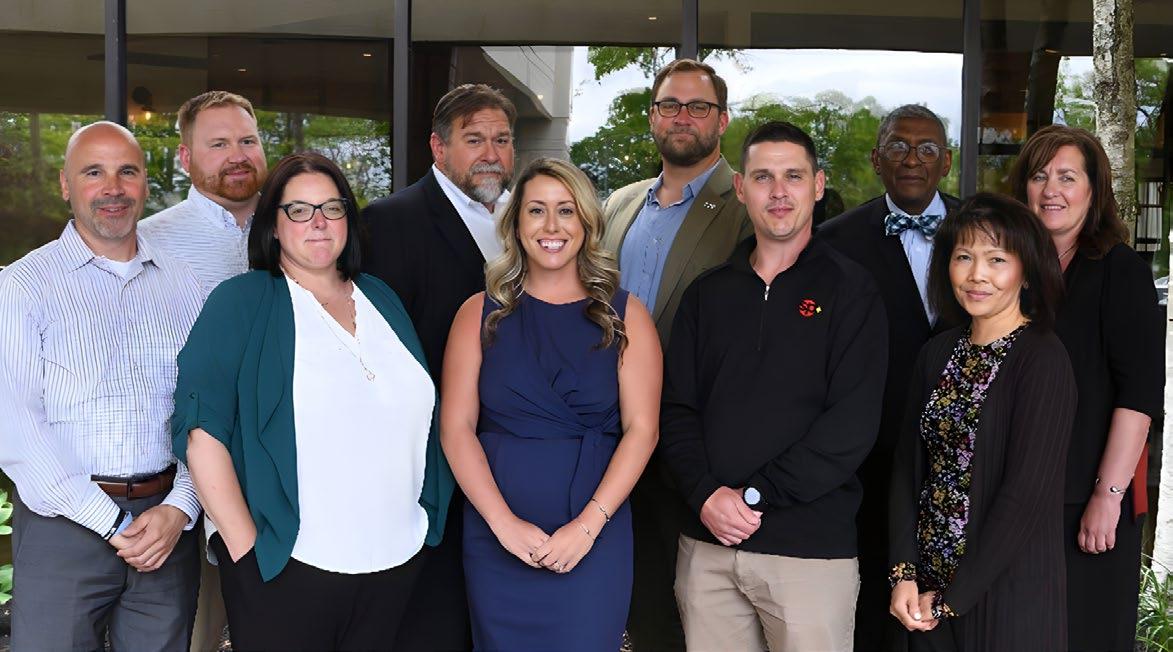
Fast Efficient Operation Support a Secure Facility Fast opening and closing speeds optimize traffic flow and security Attractive - Custom Design Options Highly customizable options including custom RAL colors BIM Available for Architects + Designers Real-time information and design support Fast, Reliable, Practical www.hormann.us +1 800 365 3667 PARKING-MOBILITY-MAGAZINE.ORG / SEPTEMBER 2023 / PARKING & MOBILITY 21
HIGH PERFORMANCE DOORS
John
and Shirley
USA.
threw out the opening pitch at Hadlock Field for the June 6th game of the Portland Sea Dogs against the Akron Rubber Ducks. John threw a perfect strike and the Sea Dogs won, 6-2.
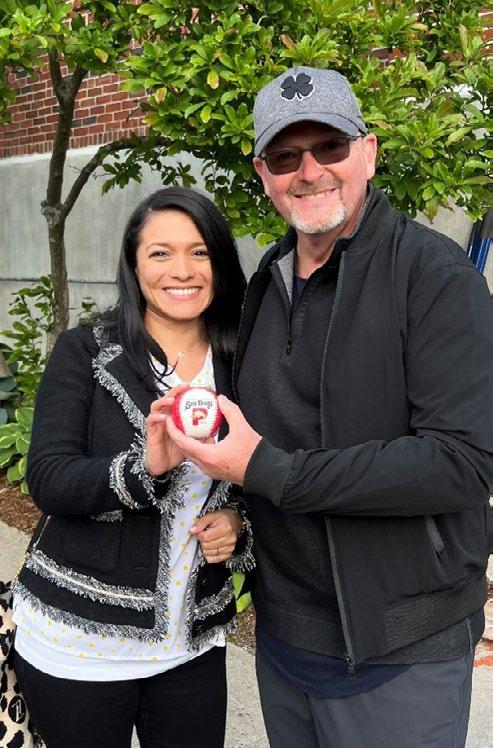
John Beehler, Southland Printing, demonstrated a natural talent for axe throwing during our June 7th outing to The Axe Pit in South Portland, ME.

The inaugural NEPC Vanguard Award winners for 2023 were Carey Redd II, CAPP, Director of the New London (CT) Parking Authority, and Norman Goldman, Senior Vice President (retired) for DESMAN Design Management. Both gentlemen were recognized before more than 150 of their peers in a ceremony at the most recent annual conference.
The NEPC is led by a 15-person Board of Directors nominated and elected by the membership to serve two-year terms. Our activities are supported by membership dues, event fees, and the generosity of corporate sponsors. ◆
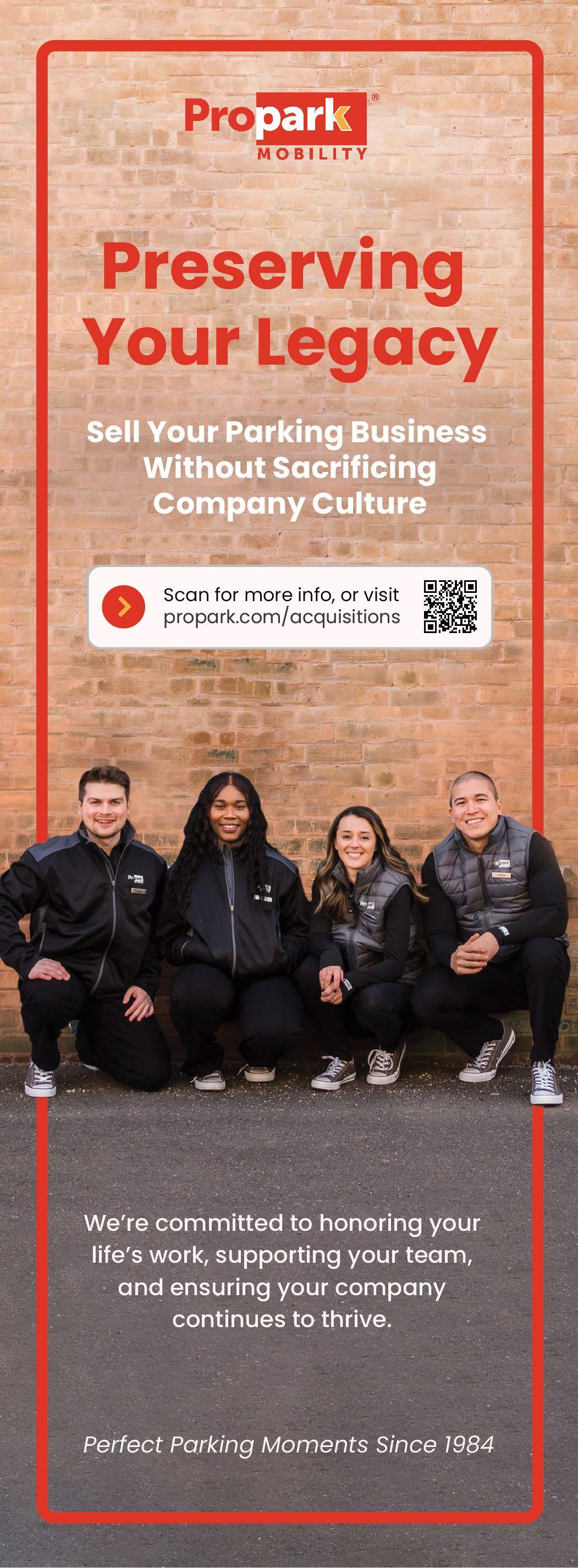

ANDREW HILL is Director of Consulting Services for DESMAN Design Management, President of the New England Parking Council, and a member of the State & Regional Association Committee of IPMI. He can be reached at ahill@desman.com
 2023 NEPC Vanguard Award Winners: Carey Redd II, CAPP (left) and Norman Goldman (right)
Cowley
Rodriguez of ZipBy
John
2023 NEPC Vanguard Award Winners: Carey Redd II, CAPP (left) and Norman Goldman (right)
Cowley
Rodriguez of ZipBy
John
STATE & REGIONAL SPOTLIGHT 22 PARKING & MOBILITY / SEPTEMBER 2023 / PARKING-MOBILITY-MAGAZINE.ORG

EXPERTS ASK THE
How do you plan and budget for creativity and innovation in your operations? What will you budget for in the next three-year cycle to drive progress, desired program outcomes, and greater efficiency?
Irma Henderson, CAPP Director of Transportation Services University of California, Riverside
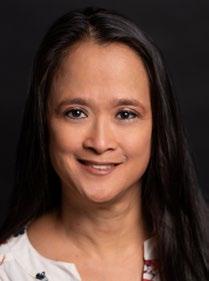
In a union environment, sometimes it’s about allowing employees to work on projects outside of their traditional scope of work. Instead of having a job description having “10% other duties as assigned”, define that 10% as “assists in the review of operations and services to identify efficiencies and integrate “best practices”; coordinates and/or participates in special projects and assignments, the scope of which may extend beyond day-today operations.” Now, the employee can be utilized for eight hours every two weeks to work on anything in your organization.
David Parker CEO Cleverciti
We’ve worked closely with several of our clients to identify unique and creative innovations that optimize operations, enhance the customer experience, improve revenue growth, and assist in adapting to new trends and technologies. Valuable pilots and programs to consider include technology upgrades, sustainability and green initiatives, customer support programs, employee training, community engagement, and data analytics and insights. The USDOT SMART grant program has provided a great avenue for funding innovative parking strategies at scale to reduce congestion and emissions and improve quality of life.
Andrew Stewart Associate Director University of California, Riverside
There are two elements I have found essential to creating an environment that fosters creativity. You need to plan and fund travel to conferences and trade shows for staff at all levels. Include time allowance in job descriptions that support cross-training and learning experiences for your staff. Don’t forget to listen to your staff and consider their ideas.
Debbie Lollar, CAPP Executive Director Texas A&M University, College Station
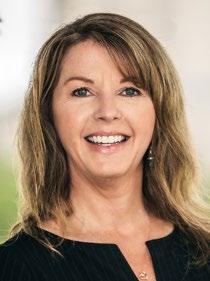
We contracted to develop both a strategic plan and a mobility master plan to direct our spending and actions. Our implementation teams work with our executive leadership to prioritize projects so the associated costs can be incorporated into our budget. Many initiatives will consume part of our usual operating budget, but we have dedicated over $1M for new initiatives and have contracted to get help identifying and applying for related grants to drive progress.
Matthew Inman General Manager MasPark and Mobility LLC

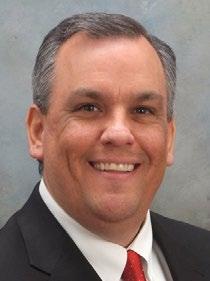
After reviewing performance, customer and stakeholder concerns, and new technologies and trends, we conduct annual strategic planning meetings with our board members to determine appropriate priorities and budgetary needs. Projects for the next few years include an on-demand local area mobility service, EV charging station management improvements, mobile license plate enforcement, and lot cameras for improved data collection.

ASK THE EXPERTS
HAVE A QUESTION? Send it to editor@parking-mobility.org and watch this space for answers from the experts. The opinions and thoughts expressed by the contributors do not necessarily reflect the opinions and viewpoints of the International Parking & Mobility Institute or official policies of IPMI. 24 PARKING & MOBILITY / SEPTEMBER 2023 / PARKING-MOBILITY-MAGAZINE.ORG
Kevin White, CAPP
Parking & Mobility
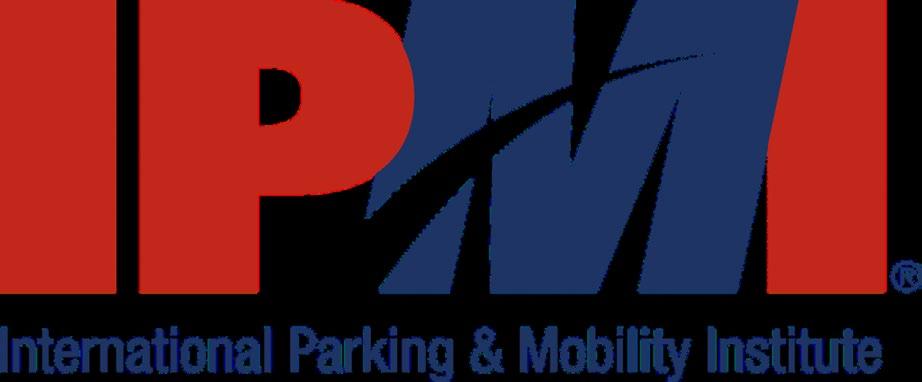
Consultant
Walker Consultants

Take Your Next Step:
Sign Up for IPMI's free CAPP Track.
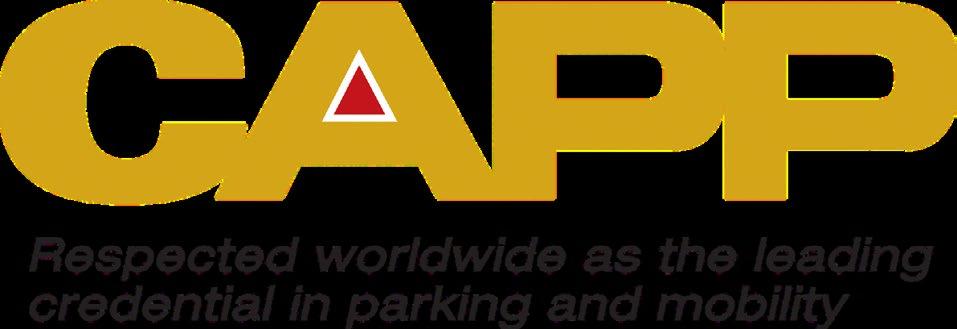
Talk to a CAPP about the process.
Apply for scholarship funding for education.
E a r n t h e l e a d i n g c r e d e n t i a l i n p a r k i n g a n d m o b i l i t y
How ELSAG® Plate Reader Solutions For Parking Management Work
AUTOMATIONS THAT ASSIST PARKING MANAGEMENT and enforcement have helped make timed and permit-based or pay-by-plate parking easier and more convenient for parking operators and drivers. The industry is evolving rapidly, and now parking sessions can be created through short-term or long-term permits, kiosks, apps, and more. These parking sessions generate a lot of data from many different sources. The improvements are welcomed, but each vendor’s service comes with its unique software, which means parking area operators are using more than one, sometimes several, software programs to manage their business.
There’s an easier way. Integrated license plate reader technology into your daily operations can save substantial time and money in your daily operations. ELSAG LPR solutions are streamlining parking management and enforcement processes by integrating with virtually any vendor, or vendors, you choose.

ELSAG LPR parking technologies are ideal for use in lots, garages, and on-street parking areas, aiding permitbased and timed parking operations. Their flexibility supports partially automated systems to full PARCS to unique parking scenarios such as nested lots and sites.
What Is A License Plate Reader?

A license plate reader is a hardware and software system consisting of digital cameras that read vehicle license plates, generating data associated with each read. Law enforcement
robust software management system, the ELSAG Enterprise Operations Center (ELSAG EOC).
How Does ELSAG LPR Streamline Parking Operations?
ELSAG LPR technology optimizes parking businesses in three critical ways:
1. Saves time and money
2. Increases compliance and revenue
3. Improves public safety ELSAG LPR solutions can be integrated into businesses just beginning to embrace automation and those already using one or several vendor services to simplify processes.
Manage all vendor data from one software system

The ELSAG EOC is a game-changer when it comes to managing data. By automating operations and providing the ELSAG EOC data management system to manage all vendor data, ELSAG LPR solutions help decrease the time spent on managing daily processes and increase the opportunities to boost revenue. The EOC manages data from your LPR cameras but also receives parking session data from other sources you may already use,
The ELSAG EOC can manage all your parking session data within the EOC regardless of how they are created (app, website, kiosk, etc.) or the vendor providing the service. ELSAG LPR solutions can integrate with virtually all parking vendors, saving
SPONSORED CONTENT
ELSAG LPR cameras mounted to enforcement vehicles scan license plates and automatically compares each to databases of permit holders, parking sessions, and scofflaws to identify illegally parked vehicles or ones associated with late or non-payment.

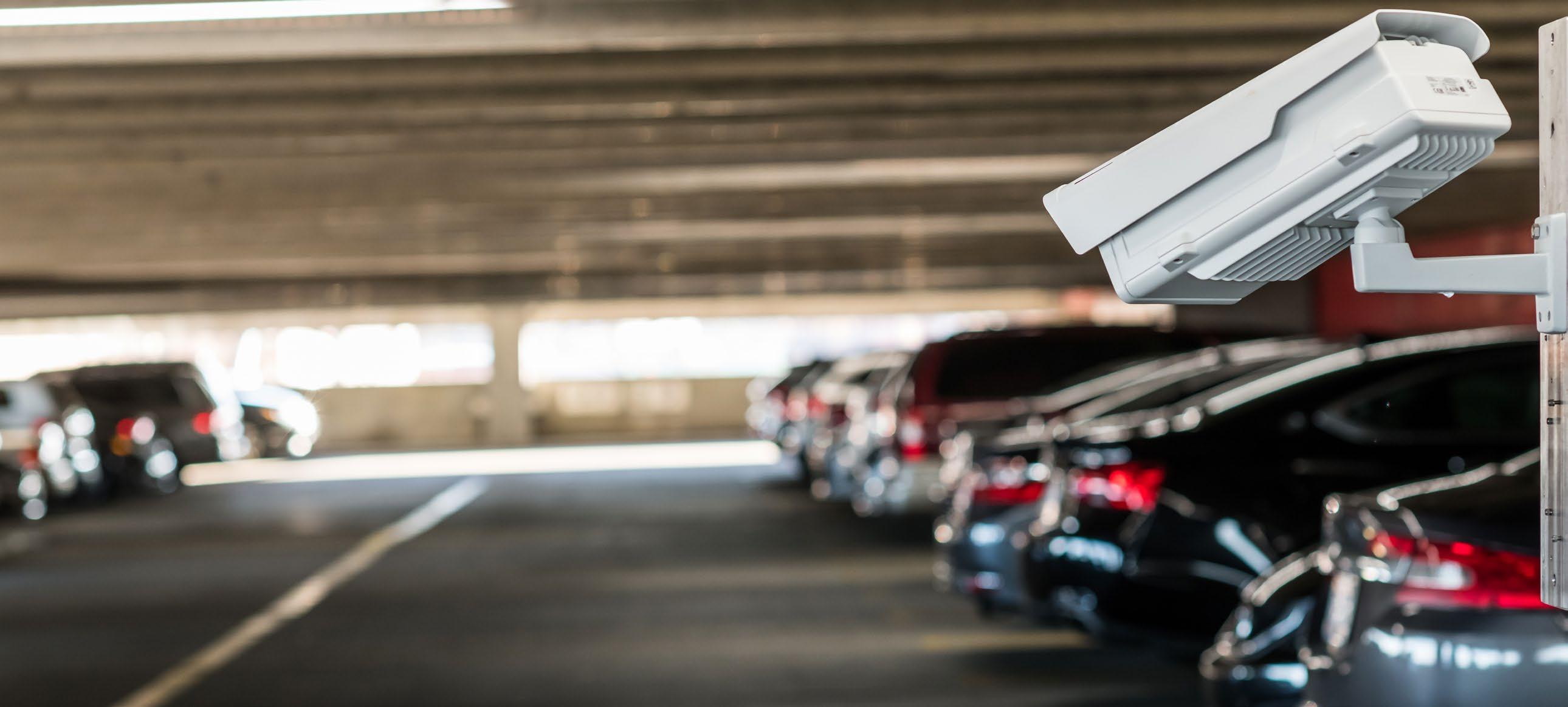
Find illegally parked vehicles and scofflaws quickly and easily
ELSAG LPR practically automates parking enforcement for timebased and permitted parking systems. Because the EOC generates whitelists of vehicles allowed to park in a zone, whether paid parking sessions, permits, or other exempt vehicles, LPR-outfitted enforcement vehicles can quickly identify illegally parked vehicles. The LPR system automatically and instantly compares each plate number to the whitelist. If the system reads a plate not included on the list, audible and visual alarms broadcast to enforcement officials via their in-car laptops.
Generate more revenue
The ELSAG EOC will have a positive effect on an agency’s bottom line through operational optimizations and improvements, but our solutions can also help generate additional revenue in three ways:
1. The enforcement automation allows officials to find illegally parked vehicles quicker, increasing the number of tickets generated. Without ELSAG LPR, it is likely that a more significant percentage of illegally parked vehicles are never identified or ticketed.

2. Over time, motorists begin to understand the efficiency of their community’s LPR enforcement and the increased likelihood of being ticketed that comes with it. Awareness typically spurs an increase in voluntary compliance, creating a more efficient turnover of spaces which is one of the main goals of most parking programs.
3. Using databases of license plates flagged due to payment issues, enforcement officials increase the likelihood of finding those scofflaw vehicles, which can be booted or towed to encourage faster payment of delinquent fees.
Additional Assets Of ELSAG LPR Parking Management Solutions
ELSAG LPR benefits reach far beyond financial considerations. These powerful solutions can provide insights to help improve your program’s efficiencies while helping to keep your community safer in these two ways:
1. The ELSAG EOC data management system is designed for in-depth queries, analysis, and reporting. By looking closely at your data, you identify traffic patterns, downtimes, and busy surges that can help you adjust operations to maximize efficiencies.
2. If your local law enforcement agency already uses ELSAG LPR, and the ELSAG EOC, you can add your LPR data to their EOC (or server) to aid their public safety missions. Even if they don’t use ELSAG LPR, you can provide access to the LPR data for investigative efforts.
With flexibility, scalability, and customized systems to meet your agency’s needs, there’s no better time to automate and simplify your parking management operations with ELSAG LPR solutions. We can help you build an LPR parking solution from the ground up or integrate with your current vendor partners for an optimized program that saves—and makes—you time and money. ◆
SPONSORED CONTENT PARKING-MOBILITY-MAGAZINE.ORG / SEPTEMBER 2023 / PARKING & MOBILITY 27
Frictionless
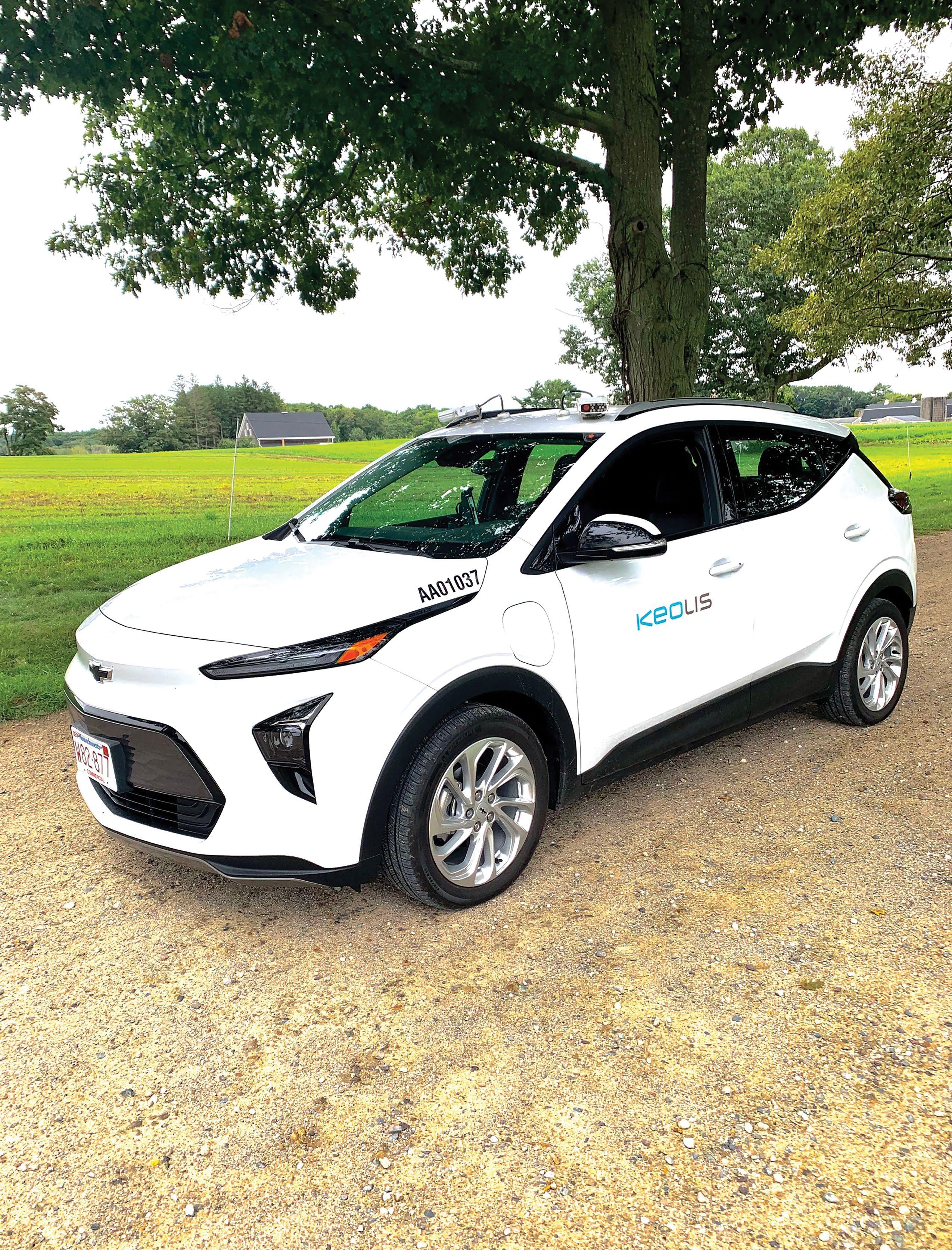
Parking at the MBTA
By Mike Bourre
EFFECTIVE PARKING
Innovation Improves Functionality and Compliance
The need for more innovation in commercial parking programs disrupts quality improvement and fuels customer frustration. While the system may appear functional, costs grow unsustainably over time, technology maintenance becomes increasingly challenging, and customer complaints pile up.

“In state governance, something is broken for a long time before people realize the problem,” explains Bruno Lopes, Director of Parking and Station Access at the Massachusetts Bay Transportation Authority (MBTA).
Lopes saw the effects of slow change in 2014. “ We were facing over six months of customer complaints not being responded
to and appeals not being processed because the volumes were overwhelming.”
So, MBTA moved from “pay-by-space” to “pay-by-license plate.” This transition eliminated a series of barriers that made the parking system clunky, such as cash collection, payroll, or costs for striping space numbers.
MBTA has transformed its parking system, replacing cumbersome handheld devices and outdated “Honor Box” systems and addressing customer dissatisfaction. The new system has streamlined multiple operations through automation, resulting in a remarkable increase of more than fivefold in net operating income.
MANAGEMENT starts with minimizing conflict with customers through frictionless interactions. To achieve that, providers must eliminate confusion from parking lots and provide the safest, most cost-effective customer experience possible.
PARKING-MOBILITY-MAGAZINE.ORG / SEPTEMBER 2023 / PARKING & MOBILITY 33
LPR Cameras Are the Primary Factor to Drive Change
LPR cameras play a central role in parking automation. Integrated with access control systems and multiple payment methods, they allow registered vehicles to enter and exit parking lots smoothly, enabling frictionless, cashless payment. Everything happens faster, leaving no room for confusion or frustration.
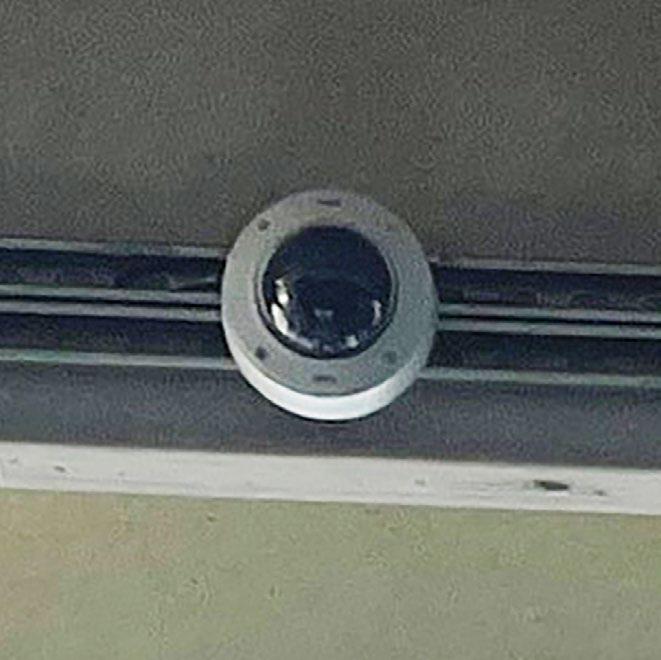

For Lopes, LPR cameras have 70% of his attention due to their ability to transform the parking experience. MBTA has used mobile LPR cameras for several years, and the organization is transitioning to stationary LPR cameras for an even more customer-centric approach.
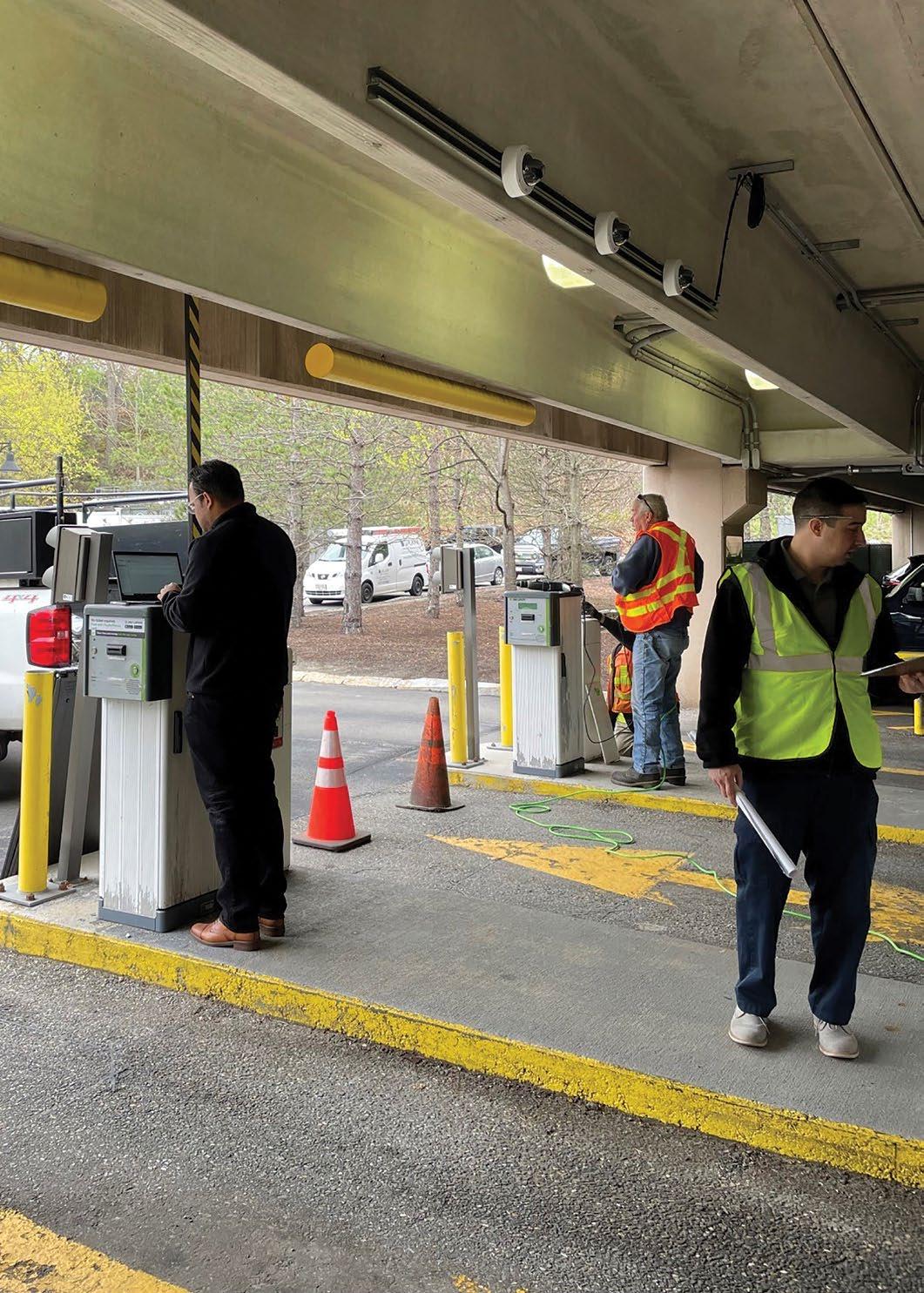
“ We think that’s going to give us incredible superpowers to do cooler things,” Lopes explains. “If you opt-in to pay for parking automatically, whenever the system detects your license plate, you drive into a parking lot completely frictionless. You don’t have to worry about anything. Your primary concern is driving safely in the parking lot and finding a convenient parking space every time.”
The ultimate goal is for LPR cameras to be integrated into Massachusetts’ MyCharlie system and bring the mobility marketplace to one place. This way, everything is done in the backend seamlessly, from transit passes and parking to blue bikes, public transportation, and other micro-mobility solutions.
In Commercial Parking, Frictionless Means Cashless
Frictionless payment methods, particularly cashless options, offer convenience and increase payment compliance. People are more likely to pay when they have multiple options that don’t involve cash, leading to a smoother parking experience for both customers and parking operators.
Pay-by-phone is a popular cashless method widely adopted in the Boston Metropolitan Area. This payment method has become prevalent following the transition from traditional pay-per-space models to payby-plate systems.
But Lopes understood that not everyone was comfortable using their phones or credit cards to pay for parking. So, MBTA introduced another cashless solution, Invoice-by-Mail.
With this method, drivers can receive their invoices via mail and pay through various methods, including MBTA’s most convenient option, an online portal, bank transfers, and checks. Invoice-by-Mail takes a non-punitive approach to enforcing parking regulations, allowing customers to pay when it’s most convenient for them, in line with local laws. This approach has helped improve compliance and increase revenue while notably reducing the number of customer complaints.
Good Communication Encourages Customers to Adapt and Adopt
Once you choose the best technology for parking automation, getting everyone on board with the online payment path is the other crucial step for a streamlined and efficient process. Clear communication about the benefits, such as time saved and reduced hassle, can help customers understand the value of cloud-based parking solutions.
FRICTIONLESS PARKING AT THE MBTA
34 PARKING & MOBILITY / SEPTEMBER 2023 / PARKING-MOBILITY-MAGAZINE.ORG
“If you opt-in to pay for parking automatically, whenever the system detects your license plate, you drive into a parking lot completely frictionless.”
MBTA implemented various strategies to educate customers on the new system — from signage to leaflets to stationed staff onsite to provide clear and comprehensive information. These communication channels served as valuable resources for customers, enabling them to understand the changes and requirements of the updated system.
“ If you can’t talk to your customers effectively, it is hard to introduce new things. It’s hard to make them adapt and adopt what you lead them to. So having convenient ways to talk to your customers is incredibly important. If I were to go back, I would also do press releases and use more social media to get the message out in the form of video with guidance,” adds Lopes, for whom communicating instructions clearly and with a widespread impact is the most effective method to encourage adoption.
Look for Best Value Procurement to Guarantee Automation Success
The MTA is building AFC 2.0 — MBTA’s future fare collection platform that could integrate parking and transportation within one ecosystem, allowing customers to use their Charlie Card for various services seamlessly. With innovative problem-solving solutions, MBTA is heading towards continuous enforcement and continuous data collection.
Lopes explains the approach that fuels change: “The one major takeaway is if you must procure anything, do best-value procurement. That best value procurement guarantees you don’t end up with a commoditized service provider.”

When integrating LPR technology and automated payment services, choosing a system that aligns with the specific needs of your parking facility and your customer base while also focusing on innovation is essential.
Adding unnecessary complexity or manual work to an often already complicated mix of solutions only leads to exponential consumption of staffing resources. Integrating LPR and Invoice-by-Mail solutions ensures a cohesive customer experience and allows centralized control and monitoring of all parking operations.
Own the Technology to Control the Investment
Technology ownership is another important element to consider when transitioning to modern parking management. As you install tech, you want to opt for direct ownership to
maximize operational efficiency over time and reduce reliance on a specific partner. It’s important to understand and control the technology. When selecting a partner, ensure they are agnostic to hardware, meaning in time, as camera technology improves, you can modify, add or change as you go along because technology tends to get better while pricing goes down. It’s an investment that allows you to explore new opportunities and adapt your business strategies without limitations or compatibility issues. This way, your long-term management decisions can remain focused on quality improvements, so you continue to solve mobility issues while providing the best customer experience possible.
Moreover, integrated with cloud-based management solutions, technology ownership gives you complete control over the data you collect and leaves the door open for additional integrations with third-party tools.
You can use this data to gain valuable insights, optimize operations, and implement data-driven strategies for enhancing parking management and enforcement.
The Takeaway
Tools like Invoice-by-Mail and multiple automated payment services enhance parking management and significantly reduce operational costs. Moreover, they add extra convenience for customers, streamline operations, and, most importantly, improve compliance—directly impacting monthly revenue.
You must select and implement the right technology to match your community’s specific needs to unlock these advantages. The decision is not simple, as numerous solutions are already available, and technology continues to evolve, constantly introducing new tools. “The parking and transportation space is ripe with innovative and disruptive initiatives. This is the right time to take the leap and try new things,” concludes Lopes.
How to make the right choice? Look for the technology that enables you to develop a system meaningfully for your customers, considering mobility requirements and flexibility in payment options to encourage adoption and reach efficiency.
◆
MIKE BOURRE is Vice President, Sales and Marketing for Gtechna. He can be reached at mike.bourre@gtechna.com
PARKING-MOBILITY-MAGAZINE.ORG / SEPTEMBER 2023 / PARKING & MOBILITY 35
Once you choose the best technology for parking automation, getting everyone on board with the online payment path is the other crucial step for a streamlined and efficient process.
A Case Study in Non-Criminal Adjudication


Easton Pennsylvania

ISTOCK/ AVID CREATIVE; SHUTTERSTOCK/ MAGIC OVEN 36 PARKING & MOBILITY / SEPTEMBER 2023 / PARKING-MOBILITY-MAGAZINE.ORG
Adjudication
IN DECEMBER 2022, I wrote the article “Non-Criminal Adjudication of Parking Tickets” for Parking & Mobility magazine. That article provided a high-level view of things to consider if/when your municipality decriminalizes your parking operations. In this follow-up, I am sharing the story of how the City of Easton, Pennsylvania, applied those vital considerations and successfully decriminalized their parking violations,
In 2012, I worked for the City of Easton as the Lieutenant of the Records & Traffic Division for the police department. Parking enforcement fell under that command. There was one Parking Enforcement Officer and one meter maintenance person at that time. Parking was an afterthought until there were complaints — then, it took center stage. We were inundated with customer complaints, non-payment of fines was rampant, meters were old and outdated, warrants for parking tickets turned citations were unmanageable, and revenue collection was poor, to say the least.
I knew there had to be a better way.
In late 2013, I began working with parking professionals, city administrators, the public, and vendors to chart a path forward for a more efficient and effective parking operation in Easton.
We were still writing paper tickets then, so we began exploring electronic enforcement options. The old paper tickets were inefficient, and data collection was nearly impossible, so electronic tickets seemed to be the answer. It ended up being part of the answer but was only the beginning of what turned out to be a highly successful noncriminal adjudication program.
As a next step, I scheduled a meeting with our successful enforcement vendor. They asked me to give them a brief synopsis of what happens to the ticket from beginning to end. I can still remember explaining the process and hearing it out loud hurt my brain — I cannot imagine what the vendors must have been thinking. They responded with a simple one-word question: “Why?” I responded, “That’s how we’ve always done it.” I know — not a great answer. So, I set out to find out if there was a better way.
I need to understand the current criminal process for unpaid parking violations, so I began
by seeking some legal advice and reading the Pennsylvania Rules of Criminal Procedure indepth. Paraphrasing, the rules state that a parking ticket turned citation must be filed within 30 days. But what if we never sent it to citation and handled it as a civil conveyance? If handled as a civil conveyance, we could remove the ticket from the criminal court system, and the Rules of Criminal Procedure would no longer apply. The court system in Pennsylvania was overwhelmed. Warrants were issued for unpaid parking violations, and the court was essentially managing revenue and collection efforts. Pennsylvania is not alone in this antiquated process; most states have some version of the same thing. What if we could get the parking violations out of the court’s hands and handle them ourselves? Wouldn’t that be better for all parties?
Asking myself why started me thinking about what a different approach to parking ticket processing could look like. I had no way of knowing at the time that this would result in a new way of looking at parking violations that would be sought out by municipalities across the country and beyond.

PARKING-MOBILITY-MAGAZINE.ORG / SEPTEMBER 2023 / PARKING & MOBILITY 37
While still working under the old system, I began building a new one. It was exciting and what drew me into the parking world. Building a new system meant starting from scratch, developing new methods of accepted payment, due process, and customer service, and rewriting or amending our ordinances to fit the non-criminal adjudication process. If I no longer have the leverage of the court system to make people pay for their tickets, then what needs to be implemented instead that is equally or more effective? How will I provide customers with their required due process? How do I go about collecting and tracking that revenue? What do I do about scofflaws?
I did not know of any other municipalities that had made this transition the way I envisioned, so there was no one to go to for a proven implementation plan. I was on my own to chart a new path, and as it turned out, that path was clumsy and full of reboots. I do not recommend anyone go about the process as I did! But, with trial and error, implementing a new system on my own was the best teacher possible. Did I make mistakes? You bet! But with each mistake and at every step of the way, I learned something new, and, in the end, Easton ended up with a much more efficient system. Now I use that knowledge to help other municipalities achieve successful parking de-criminalization.
Step by step, we navigated the changes. I spent countless hours writing ordinances allowing the city to immobilize vehicles for non-payment by the registered owners, and we began implementing our booting program by utilizing our motorcycle officers/traffic officers to boot scofflaws found randomly by our Parking Enforcement Officers (PEOs); not one of my best ideas These new tasks were not a good match for their position. So instead, we developed a new Traffic Officer position with a job description that included booting scofflaw vehicles. The new Traffic Officer began using technology to our advantage and resurrected an underutilized and outdated license plate recognition (LPR) system. His efforts took booting numbers into the triple digits seemingly overnight. Eventually, we grew the number of LPRs and the types of vehicles they were mounted on to better cover the city and relay
We developed a new Traffic Officer position with a job description that included booting scofflaw vehicles. The new Traffic Officer began using technology to our advantage and resurrected an underutilized and outdated license plate recognition (LPR) system. ...This resulted in a significantly higher capture rate.
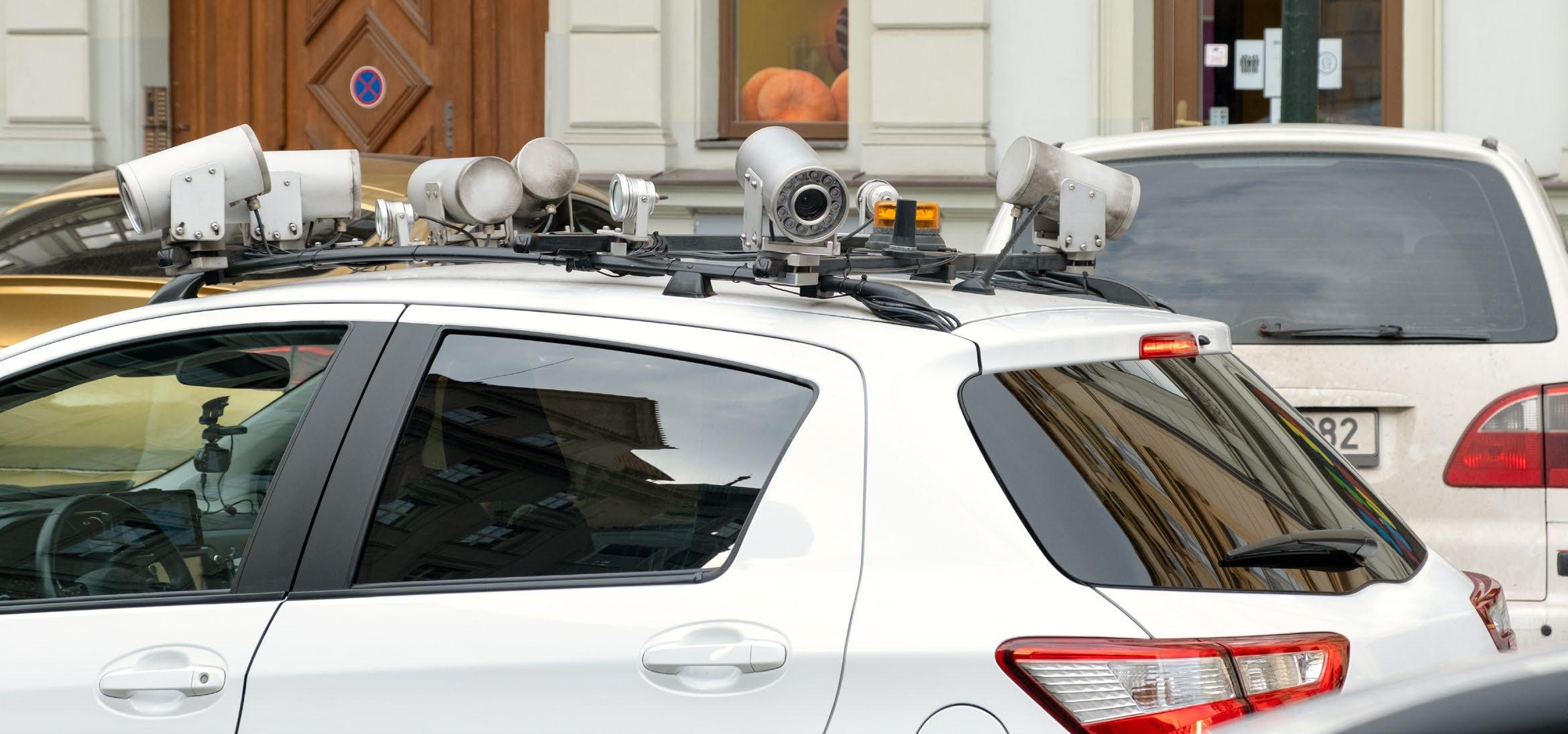
A CASE STUDY IN NON-CRIMINAL ADJUDICATION
SHUTTERSTOCK/ ARIE STUDIO 38 PARKING & MOBILITY / SEPTEMBER 2023 / PARKING-MOBILITY-MAGAZINE.ORG
information to our office. This resulted in a significantly higher capture rate. We found the LPRs to be so successful that we even put one on the meter maintenance van and, eventually, two GEM electric vehicles. We grew our parking enforcement staff and provided them with regular training, professional uniforms, and more structure. Ultimately, we promoted a long-time traffic division staffer to the position of Parking Enforcement Supervisor. Building that team from scratch was one of the most important and gratifying steps because everyone had a part in developing this new process. It gave them ownership of this massive undertaking.
Transitioning parking enforcement from criminal to de-criminalized took us about one year. I recall going to the magistrate’s office and withdrawing hundreds of active citations and warrants. Collecting all that debt was now on us. We partnered with our enforcement vendor, who had experience in collections for municipalities. While we were using the court system, our collection rate was close to 50%, and tens of thousands of dollars were tied up in court-ordered payment plans that collected pennies on the dollar while scofflaws racked up more
fines. In the first year of non-criminal adjudication, our collection rate was around 77%. Each year since, the city has managed to keep those collection rates high due to the de-criminalized parking efforts.


In my previous article, I discussed some benefits of this process for the customer and the municipality. The confusion among our customers dropped significantly, they now had a specific and assigned place to go to air complaints, discuss payments, etc. The ability to forgive tickets was now a much easier and friendlier process. For those that were not forgiven and requested by the customer to be reviewed at a hearing board, we created a third-party, independent Parking Ticket Hearing Review Board.
Parking enforcement previously used three different magistrate offices in the city, the busiest of which handled well over 10,000 parking citation hearings in the last full year of using the courts. In the first full year of non-criminal adjudication, our Hearing Board heard only 24 appeals. That is not a typo! To this date, the Hearing Board convenes once monthly and schedules a maximum of four monthly hearings. Even with a full docket, the board never experiences more than 48 parking hearings yearly.
Among the biggest successes of using a Hearing Board is that we no longer had to pull our Parking Enforcement Officers from their routes to attend court hearings. We simply sent one representative from the city to present each violation, supporting documentation, and photos of the violation(s) to the review board. For most agencies, this would greatly save overtime pay for parking enforcement officers. In creating proper due process, we allowed the customer to have a final appeal in the Court of Common Pleas.
At the end of the day, the non-criminal adjudication transition in Easton resulted in the recovery of millions of dollars of previously uncollected revenue, a better experience for the parking public and parking division staff, a vastly decreased workload for court staff, and a more effective use of parking technology. To date, it is one of my favorite parking-related projects!
◆
MATT LOHENITZ is the Owner of LOHI Consulting, President of the Pennsylvania Parking Association, and a member of the IPMI State and Regional Association Committee. He can be reached at mlohenitz@outlook.com
ISTOCK/ LONGFIN MEDIA PARKING-MOBILITY-MAGAZINE.ORG / SEPTEMBER 2023 / PARKING & MOBILITY 39
In
the first year of non-criminal adjudication, our collection rate was around 77%.
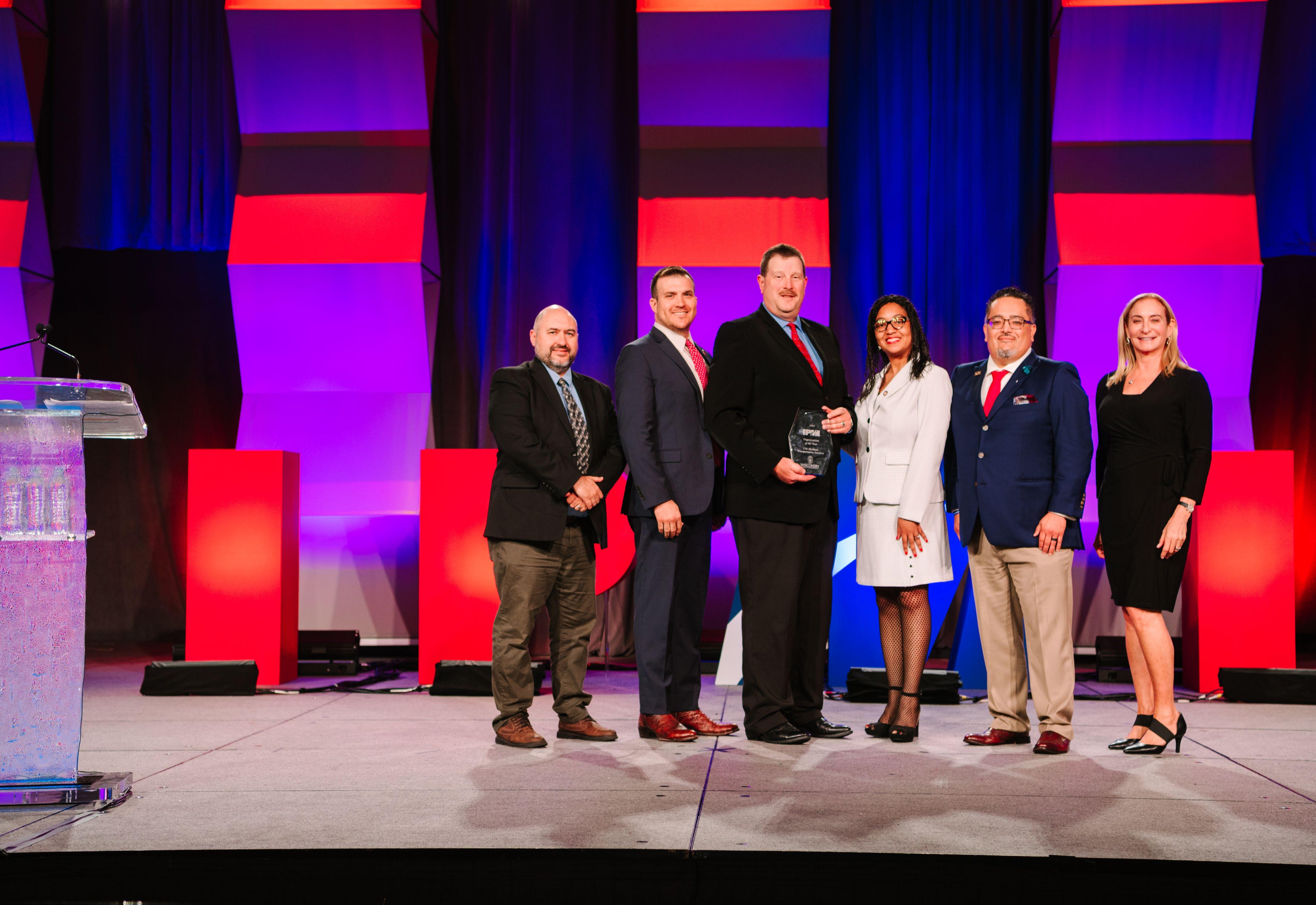

us yours. The 2024 Call for Awards opens September 19. Submit an entry in one of our two recognition programs to celebrate your organization’s achievements and tell the industry about your fantastic projects, programs, staff, and accomplishments. Visit parking-mobility.org/awards for details. Scan the QR Code for more information 2023 Organization of the Year University of Wisconsin - Madison, Transportation Services
Every project, leader, and organization has a story.
Tell
IPMI’s 2024 Awards & Recognition Programs

Get recognized for your contributions to our industry!
Our comprehensive recognition honors projects and programs as well as individuals and organizations. Tell us about your innovative and creative programs or impactful, solutions-based projects in our Awards of Excellence program. Looking to celebrate your staff or herald the achievements of your organization? Complete an application in the Professional Recognition Awards program. Submit an entry in one or both programs in these categories:
▪ Architectural Design
▪ Stand-alone Parking & Mobility Facility Design
▪ Mixed-Use Parking & Mobility Facility Design
▪ Surface Parking Facility Design
▪ Surface Parking Facility Restoration
▪ Structured Parking Facility Restoration
▪ Sustainable Design
▪ Marketing & Communications
▪ Innovation in a Mobility, Transportation, or Parking Program
▪ Organization of the Year
▪ Emerging Leader of the Year
▪ Professional Excellence Awards Categories include customer service, finance, frontline, human resources, innovation, leadership, marketing, management, operations, and technology. Or, select your own!
The 2024 Call for Awards will be open September 19 - November 1.
HOW TO ENTER
IPMI offers a streamlined awards entry process via a sophisticated online platform. We encourage entries from all market segments and sectors, and all IPMI members are invited to submit in all categories. Submit your best people, programs, and projects - and be sure to share great pictures and visuals as part of the process. Download comprehensive award details and entry criteria after September 19th at parking-mobility.org/awards.
▪ James M. Hunnicutt, CAPP Industry Professional of the Year
DATA DRIVING
Business Intelligence & KPI’s for Predictive Digital Parking Operations
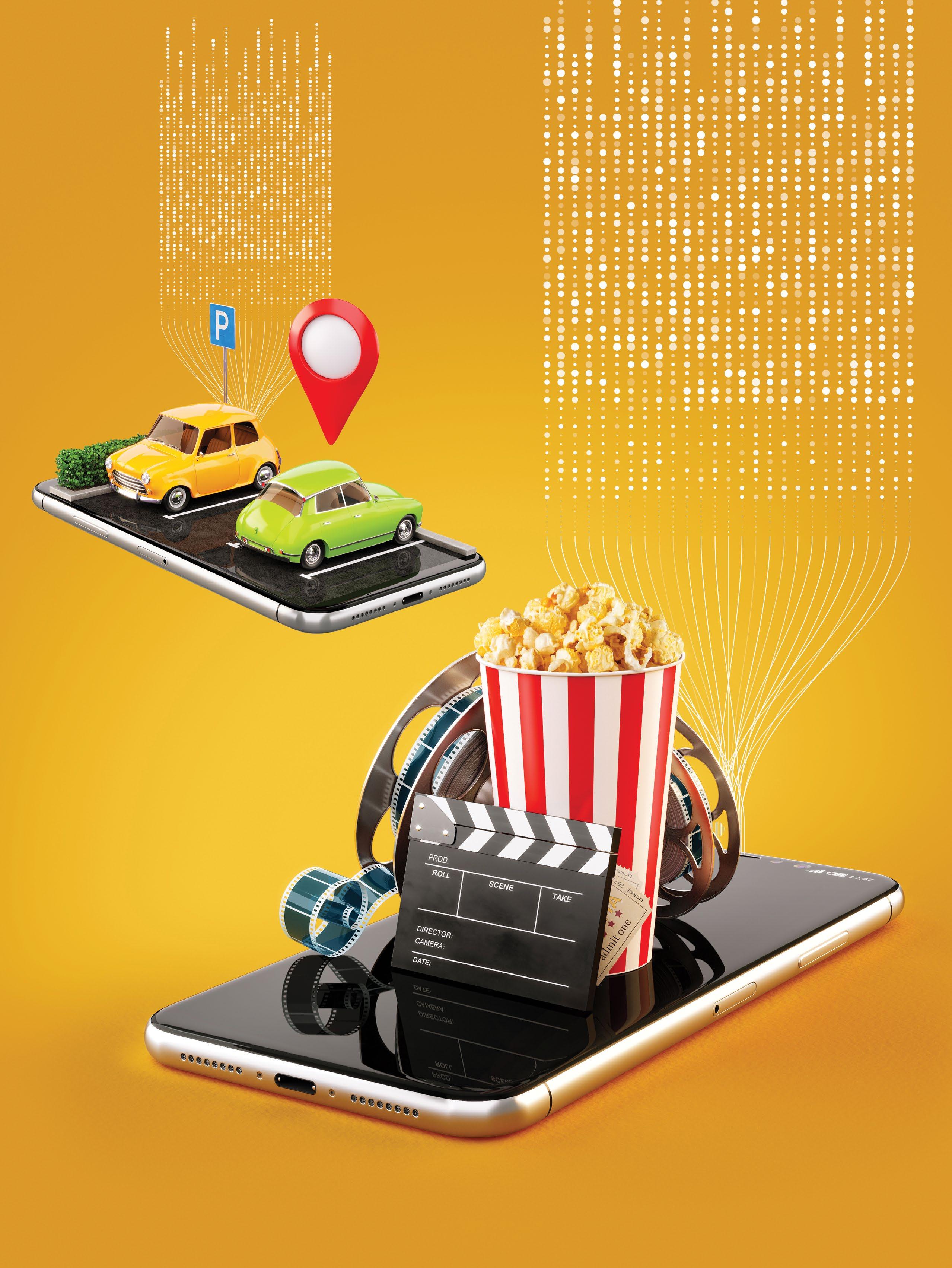 By Rajiv Jain and Joe Parker
By Rajiv Jain and Joe Parker
42 PARKING & MOBILITY / SEPTEMBER 2023 / PARKING-MOBILITY-MAGAZINE.ORG
DECISIONS
Fast Forward Another 15 Years
This data has hidden value for business decision-makers, but only for those who can look into the amorphous mass of data and identify insightful, actionable patterns. It is just a massive black hole for others who cannot analyze or capture this data.
Demographic Shifts Bring Significant Changes to Customer Behaviors
As the demographics change over time, it leads to a significant shift in consumer behaviors, changing the need for products and services. As businesses offer new products and services, that further influences changes in consumer behaviors. Let’s look at how this pertains to the parking industry.
30 years ago:
Mr. Cooper, Sr., drove downtown to watch a movie and have dinner with his family. He found out what movie was playing in the theater — perhaps from a billboard that he drove by. He learned about the restaurant from a friend. He found a parking coupon from a direct mail flyer or drove around the block to find the nearest parking spot. Once parked, he fed coins to the parking meter or paid cash to the attendant and used his coupon if he had one. Data was generated in these simple activities, but since every
action was disconnected from the others and most were not digital, there was no way to capture and analyze the data in a single place and analyze it. The idea of the parking operator having access to that data so they could use it to target Mr. Cooper better the next time he came downtown was unthinkable. The best an operator could do was to literally count the paper coupons to determine which marketing promotions worked better than others.
Fast Forward 15 Years
Mr. Cooper, Sr.’s son, Mr. Cooper, Jr., also wanted to watch a movie as his father did 15 years before. His experience started with him seeing a movie advertisement on his social media feed. He bought his tickets online, checked the restaurant reviews online, used a parking app to find the parking garage with the best price and nearest to the theater, and used google maps to navigate to the garage. He then used his phone to check into the garage, paid using his credit card, and left a nice online review of his parking experience there. Now that is the type of connected data that is valuable to the parking operator: they can now offer targeted promotions to Mr. Cooper, Jr., to have him join their loyalty rewards club, understand his interests, offer add-on services, and more.
It’s now the present day, and Mr. Cooper, Jr.’s daughter, who lives in a downtown apartment, gets all her content online, uses public transportation or rideshare to move around, and does not own a car, but her parents often drive over from suburbs to meet her on the weekends. She is considering having her boyfriend, who owns an EV, move in with her, and she herself is looking to get an e-bike. Now, a parking operator must foresee and plan for a demographic shift, as it would significantly impact on their future operations.
Parallel Data Universe Reflection of our Physical World
The good news for parking business decision-makers is that since every aspect of our lives is now interconnected, most of our actions in the physical world leave a footprint in the data verse. But as demonstrated in the above example, these are complex interconnections and enormous datasets. Mapping out user journeys and identifying insightful trends and the relationship of these trends to their business is a very complex problem.
Given the massiveness of this data, it is not humanly possible to visually identify even the simplest patterns, let alone identify any deeply hidden patterns, unless somebody draws the outlines of those patterns for us. That job has traditionally been done for us, the business managers, by the data scientists and statisticians.
IN THIS HYPERCONNECTED WORLD, it is no surprise that every move we make and every action we take has a data footprint in the parallel digital universe. What is normal day-to-day living is valuable data for somebody else.
STOCK.ADOBE.COM / NATROT/ ASTA CONCEPT PARKING-MOBILITY-MAGAZINE.ORG / SEPTEMBER 2023 / PARKING & MOBILITY 43
Business analysts and data scientists traditionally have several very sophisticated business intelligence tools available to them to define the models your business is interested in, analyze data, and extract meaningful information from the data.
But here is the fallacy: they are the ones who defined these models based on what you asked them to look for, and their discovery of patterns is further constrained by the models they have built. They can only find what they are looking for. And that, too, depends on whether their models were robust enough to delineate the patterns in the data for them.

But what about those hidden patterns you did not predict, which your data scientists were not even modeling for? Any of those hidden patterns missed by you, but discovered by your competitors, could become a huge competitive differentiation for them. As in the above example, these patterns could have identified a trend in the parking industry that could make your business irrelevant if you did not plan for the expanded use of your parking assets, or it could detect a sudden economic shutdown like we all faced during the COVID pandemic for which we found ourselves completely unprepared.
Business Intelligence in Practice in the Parking Industry
Business intelligence can sound intimidating to many

parking operators and may seem like a concept far out of reach. Thankfully, emerging technologies including digital parking platforms, artificial intelligence (AI), blockchain, and augmented analytics, are not only setting the path forward but also demystifying the path from data analysis to business intelligence. These technologies are taking business intelligence out of data scientists’ domain into business managers’ hands.
With the right tools and technologies in place, any parking operator can apply business intelligence to their operation to be able to create more effective marketing programs, predict demand and consequent capacity and staffing needs, and, in general, create a more compelling and seamless customer experience. Parking businesses can leverage data to their advantage in several ways.
Digital Parking Platforms Essential to Implement Rapid Change
The digital parking platform, hand in hand with business intelligence, makes the digital transformation of a parking operation possible. In this digital age, data collection at every customer touchpoint, rapid data analysis, implementation of iterative change strategies, and precise measurement of the outcome of the changing stimulus becomes a continuous process. The velocity of this process determines the competitive advantage of a digital organization.
DATA DRIVING DECISIONS 44 PARKING & MOBILITY / SEPTEMBER 2023 / PARKING-MOBILITY-MAGAZINE.ORG
A digital parking platform enables the rapid creation and launch of new services previously impossible with monolithic technology systems. Further, since the digital platform pervades the entire operation, it enables very rich data collection at every touchpoint.
Digital parking platforms collect large amounts of data about their customers, their customers’ transactions, and revenues and expenses related to their parking operations.
Traditionally parking managers track many key metrics, including:
● Daily transient sales — revenue, year-over-year difference, trends.
● Price per parking session, trends.
● Monthly sales by region.
● Sales by channel where the channels are driveup, direct reservations, aggregator reservations, validations, hotel, employee, loyalty, corporate partners, etc.
● Revenue per spot.
● Average length of stay.
● Reservations sold and revenue by time of day: early morning, morning, mid-day, late afternoon, and evening.
● Loyalty program usage, new signups, points earned, redeemed.
Digital parking platforms also collect large amounts of data about how customers interact with your products and services:
● The path customer took to make a reservation at your garage.
● Time it took to complete a transaction.
● Ease of use of your app.
● Influences on the customer to buy additional services.
● Customer reactions to your promotions.
● Customer price sensitivity.
● Wait time at entry and exit.
● Interactions with the attendants.
While you may be generating reports periodically, it is easy to forget that a mass of data is sitting in a database full of useful information that you can use to run your operation more effectively. Business intelligence is all about that forgotten mass of data and how you can sift through it for answers to help you manage more effectively.
Customer Behaviors and Marketing Outcomes:
Understanding customer behavior, demographic trends, and customer journey is essential to understand how to market to them effectively. Moreover, marketing analytics are necessary to measure the effectiveness of your marketing campaigns. This activity is increasingly
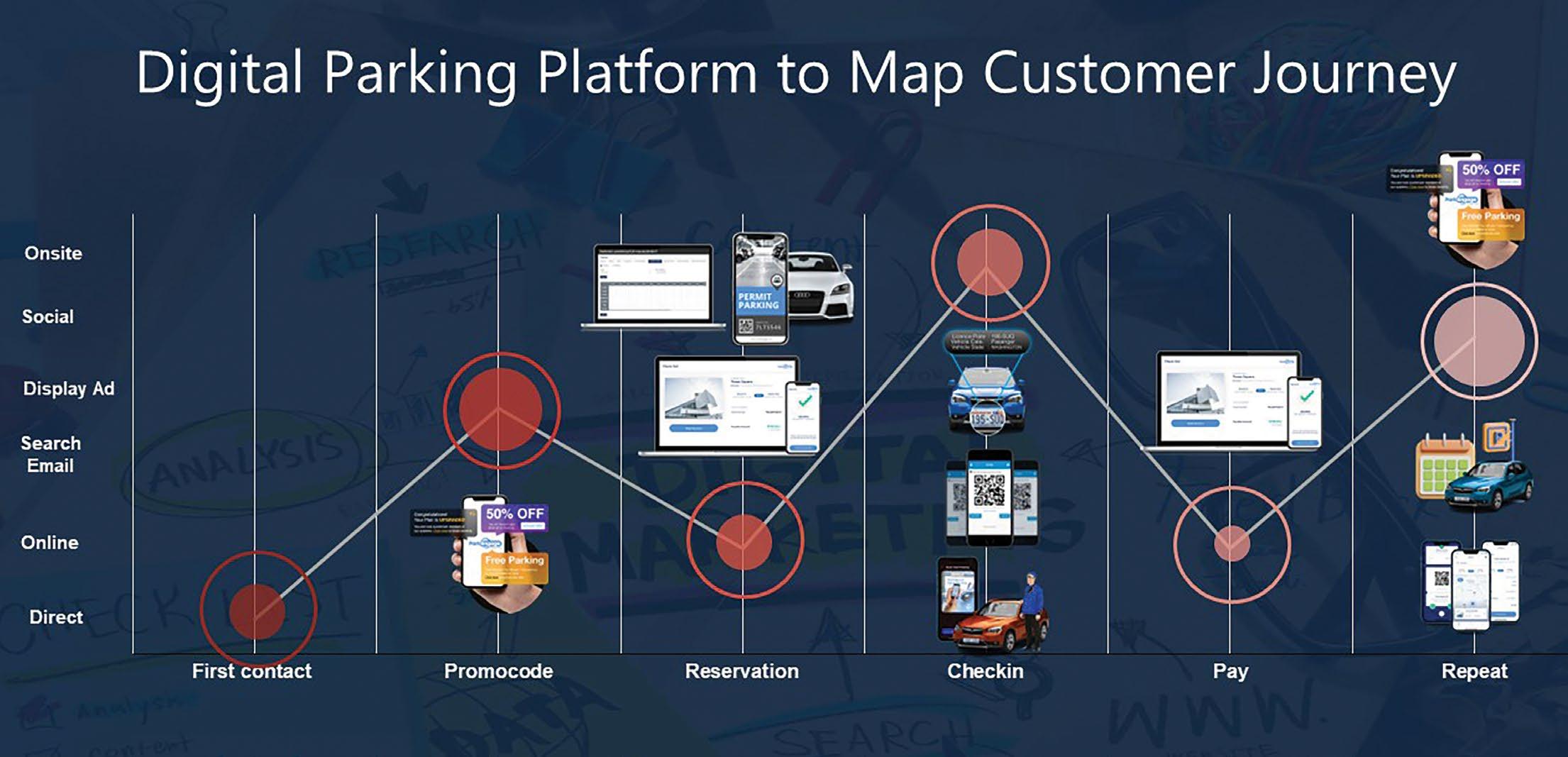
PARKING-MOBILITY-MAGAZINE.ORG / SEPTEMBER 2023 / PARKING & MOBILITY 45
becoming more predictive thanks to big data and augmented analytics. In other words, companies are now confidently and accurately anticipating what customers will want in the future and how their marketing programs can influence their behaviors.

Create and Deliver Right Products and Services: When you know how customers interact with your products and services, you can innovate to offer them what they want and increase their stickiness to your products and services.
Increase Revenues: Optimizing business processes, and making better business decisions, have a positive impact on the bottom line. But the valuable data your systems have collected can also be monetized to create new revenue streams. You can use that to offer highvalue data-driven products to market.
Operational Business Intelligence. For every parking operation, making better business decisions is absolutely one of the top priorities. This includes hiring the right people, targeting the right customers, and boosting revenue. With data collected in their operations, they can better understand what’s happening in the business and the broader market and predict what might happen in the future. Data can and should be
used to make smarter business decisions across every business function.
Internal Operations: Thanks to business intelligence, every business process and every aspect of business operations can be streamlined and enhanced. Whether it is optimizing pricing, accurately forecasting demand, reducing employee turnover, boosting productivity, and strengthening the value chain across all business areas, it’s easier than ever to make improvements, generate efficiencies, save money, and automate processes.
Key Challenges for the Business Intelligence Initiatives
Of course, the success of any business intelligence initiative depends on several success factors:
● The questions that we ask about our operation.
● The quality and relevance of the available data regarding the questions asked.
● The ability to extract the answers to our questions from available data.
Key Performance Indicators (KPIs) are, in essence, the questions we ask about our business. What is it about our business that we are trying to optimize? How do we measure our business performance relative to that aspect of our business that we are trying to improve?
KPIs tie the above three success factors together.
DATA DRIVING DECISIONS 46 PARKING & MOBILITY / SEPTEMBER 2023 / PARKING-MOBILITY-MAGAZINE.ORG
Simply put, a KPI measures our performance along a predefined direction we are questioning. “Measurement” is the operative term here, as we must be able to measure what we want to improve to tell when the changes we make in our operation improve things. And once we know what we want to measure, we can ensure that we collect the data needed to track that measurement over time.
For example, let’s say that post-COVID, our transient operations have not returned to their previous levels, and we want to increase our weekday transient traffic through a series of marketing promotions. We will also need to monitor the effectiveness of the marketing promotions that we roll out. If our measure will be our transient occupancy during weekdays, then the effectiveness of our marketing programs would involve the comparison of our weekday transient occupancy to what we predict that it would have been without the marketing program.
There are a few traps built into this approach, however. How would we predict what our weekday transient occupancy would have been? Does our underlying data contain the information that we need about occupancy? How do we know whether our marketing effort has affected our performance and not some other factors?
We may need to answer some more basic questions first: do we have a method to track whether a particular customer visits our facility due to our marketing program, or is their visit coincidental and independent of our marketing effort?
This is where business intelligence comes into play. We must ensure we have the right tools and data to answer all these questions effectively. Business intelligence isn’t just about reporting, it enables us to apply statistical methods on top of our reporting to understand the correlation between, in this example, our marketing programs and our occupancy. Business intelligence enables us to apply predictive algorithms to our data, including the influence of other factors like seasonality, the effect of a particular holiday falling on a weekday versus a weekend, or a special event occurring near your facility.
Once the data is in place and we have the right business intelligence tools, we can go one step further. As we run our marketing programs and monitor the effect that these programs are having on our weekday
transient occupancy, we can now further apply our predictive analysis in advance of our next marketing program to make sure that our facility is appropriately staffed for the demand that we are anticipating. Based on past outcomes, we can apply similar methods to determine how to target our monthly lease program to maximize revenue per stall.
Final Thoughts
A successful business intelligence initiative requires organizational agility to measure, react, and change at a digital pace. This level of agility is only possible if the parking operation runs on a digital parking platform, as only such a platform makes an organization digital at every touchpoint. Whether it is a customer, employee, partner, or any other stakeholder, valuable data is generated at every touchpoint, and those are also the points where organizations need to introduce change.
The digital pace makes it very hard for traditional business intelligence processes to keep up. Preconceived business KPI definitions by the business managers, and the data scientists’ ability to rapidly model change, are becoming a limiting factor for organizational growth.
Machine learning and artificial intelligence can do the job of data modeling and pattern recognition at a significantly faster pace than humans can. Not only are they faster, but they can also identify hidden patterns that business managers may not have even thought of. Augmented analytics is the way forward.
The use of blockchain further democratizes the process of data sharing securely. Thus, blockchain analytics works hand in hand with augmented analytics and would change how business intelligence is approached today. And both technologies and digital parking platforms will make business intelligence systematic to any digital parking business ◆
JOE PARKER is VP of Customer Success of ParkEngage, Inc. He can be reached at joe. parker@parkengage.com
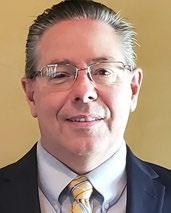
RAJIV JAIN is CEO of ParkEngage Inc. He can be reached at rajiv.jain@parkengage.com

PARKING-MOBILITY-MAGAZINE.ORG / SEPTEMBER 2023 / PARKING & MOBILITY 47
HOW MUCH PARKING DO YOU NEED

48 PARKING & MOBILITY / SEPTEMBER 2023 / PARKING-MOBILITY-MAGAZINE.ORG
P
ARKING MINIMUMS were first introduced in 1923 by the City of Columbus, Ohio, and since the post-war boom of the 1950s, they have been a fundamental principle of urban planning across the United States. The idea was to ensure that the parking requirements of new developments could be met within those developments without impacting nearby curbside spaces.
Published in the Institute of Transportation Engineers Parking Generation and codified in most zoning ordinances, minimum parking requirements vary for different uses: residential developments often require one to two spaces per unit; retail and commercial usually have ratios based on gross floor area; and restaurants may be based on area or number of tables. Hospitals and churches must satisfy local zoning requirements to ensure they don’t overwhelm local parking supplies.
An Individualized Approach to Parking Minimums
 By Rob McConnell, PE, SE, LEED Green Associate
By Rob McConnell, PE, SE, LEED Green Associate
Parking minimums have long been a bone of contention for developers. They complain that the requirements can be onerous, leaving their developments with scores of unused parking spaces and unnecessarily driving up the cost of their projects. Considering that the national median construction cost is $29,000 for each structured parking space and twice that amount for underground parking, it’s easy to see why developers push back. And it’s not just the cost that’s at issue. Parking is very space intensive, and land that’s required for parking can’t be used to serve the development’s primary function. In some dense urban infill developments, structured parking and even automated mechanical are not even physically practical.
Recently, it has also become popular in some academic and urban planning circles to blame abundant parking for promoting car ownership, urban sprawl, and associated traffic congestion and pollution. Some anti-parking pundits call for removing cars from downtown by creating car-free urban cores. Fast Company magazine referred to this movement as “the car-free revolution.”
Since the publication of Donald Shoup’s The High Cost of Free Parking in 2005, there has been increasing talk about eliminating parking
minimums. Some cities are either reducing parking minimums or eliminating them to incentivize more development in their urban cores. In fact, approximately 200 communities have already reduced or eliminated parking requirements, including Buffalo, New York City, Portland, San Francisco, Seattle, and San Diego.
This approach is far from universal, however. Americans are extraordinarily reliant on their cars. According to Statista’s Global Consumer Survey, three out of every four Americans use their own vehicles to get to and from work. Only one in ten use public transportation. While it’s certainly a worthwhile goal to promote mass transit and alternative modes of mobility, planners and leaders must still implement parking plans that accommodate the vehicles that travel to and from their cities daily. In fact, to better meet the needs of visitors and residents, some cities have reversed course from the parking elimination trend, including South Boston, which increased their parking requirements in 2016, and Miami, which reinstated theirs last year.
Why It Matters
When determining how much parking a development needs, developers and city planners must balance and right-size parking. As stated earlier, excessive parking requirements can unnecessarily cost developers much money to create underutilized spaces. Not only can this adversely impact the overall project by reducing the amount
SHUTTERSTOVK/ EVIART PARKING-MOBILITY-MAGAZINE.ORG / SEPTEMBER 2023 / PARKING & MOBILITY 49
of space available for its primary purpose, but it also adds maintenance and life-cycle costs that can be challenging to offset with parking revenues.
The impact of inadequate parking requirements on communities can be just as problematic. Contrary to what some pundits say, cities don’t reduce parking demand by reducing parking supply. Instead, when cities permit the development of projects with inadequate parking, they create additional stress on existing parking supplies. When workers at new commercial or retail developments or residents of new housing projects aren’t provided adequate parking, they are forced to look for parking elsewhere, usually on local streets or in nearby parking facilities. This causes congestion on local streets and pollution as drivers fruitlessly search for on-street spaces. In addition to inconveniencing residents, this can also undermine public safety if it impacts first responders trying to get to an emergency. The additional demand also drives up parking rates in area lots and garages. When there’s more competition for a finite number of parking spaces, prices will inevitably increase. This places an additional burden on area residents and employees of local businesses.
Market Driven
Why are some cities eliminating parking minimums while others are increasing them? Every community is different, with its own unique needs and opportunities. A city with a robust public transit system or a history of micro-mobility adoption may need less parking than one in which vehicle commuting is the predominant means of transportation.
Ideally, the free market should determine the right vehicle accommodation and development mix. Every developer wants a financially successful project, which requires the right mix of amenities, including parking. The perception of insufficient parking, excessive traffic cruising the blocks, or expensive parking drives customers away. Banks and other lenders also play an important role because they are unlikely to fund new developments with insufficient parking. Development financing is predicated on having a marketable, competitive product, and, in most places in the US, this means providing some amount of parking.
How do you figure out how much parking is needed?
Certainly, a parking consultant can help by evaluating
current parking needs and anticipated growth in those needs. A parking consultant can also identify opportunities for reasonable parking reductions based on shared use, alternative transportation modes in play, and other transportation demand management strategies.
At face value, eliminating parking minimums should allow the free market to dictate the necessary amount of parking. It’s not always that simple, however. Publicprivate projects, where private developers are backed by public money, may not have the input of private lenders. Publicly funded projects may be guided by social policy or other non-market-driven goals.
Affordable housing is one building type at the center of the current debate. By minimizing or altogether eliminating parking, the developer can use the savings to build more housing units, which serves a public benefit. Given the subsidized nature of the development, there is little risk to the developer in doing so. There are, however, unintended consequences.
In most cities, in-town residents need a car to get to work, go shopping, visit friends and family, and find entertainment. Sure, it’s less of an issue in cities in very dense urban areas with good public transit, but these are the exception, not the rule. This is a particularly important issue in neighborhoods located in larger cities. Many urban areas are “food deserts” with no grocery stores. In these communities, residents must have access to a car just to get food for their families.
People with disabilities can also be significantly impacted when parking minimums are eliminated. Is it reasonable to ask someone with mobility challenges to park several blocks from their residence or walk up to a half mile to a transit station? Likewise, is it fair to people with disabilities who already live or work in the neighborhood to share often insufficient supplies of ADA parking spaces with people who should be parking in that development?
For these reasons, applying (or not requiring) parking minimums must be balanced and fair. As planners, we must operate on the assumption that most people in a given community have a car or other personal vehicle. Limiting the availability of parking spaces doesn’t reduce the number of vehicles needing to park in the area; it just increases competition for those limited spaces and, ultimately, their cost.
There are better ways to manage parking demand while reducing the amount of land required to

HOW
SHUTTERSTOCK/ EVIART 50 PARKING & MOBILITY / SEPTEMBER 2023 / PARKING-MOBILITY-MAGAZINE.ORG
MUCH PARKING DO YOU NEED?
accommodate that demand—shared parking, for instance. Most zoning codes allow some amount of shared parking. So, for instance, if a church is being developed in a neighborhood, it can partner with another local entity with complementary parking needs, such as an office building. The church will primarily need access to parking on weekends, while the office will need it during the week. Rather than develop separate parking for each, the two can share the same parking facility. There are numerous examples of entities that can share parking in this way.
Parking management and enforcement are also essential. When parking minimums are reduced or eliminated, cities must be prepared for additional cars occupying on-street spaces for extended periods of time. When long-term parking occurs on-street rather than off-street, the convenient parking spaces that local business need for their customers aren’t available, driving them elsewhere. The city ends up hurting its local businesses and, consequently, losing tax revenue.
Cities must implement planning approaches encouraging space turnover, such as parking time limits and targeted pricing strategies. Of course, this strategy doesn’t work without adequate enforcement.
Targeted Strategies
Reducing or eliminating parking minimums isn’t necessarily bad, but city leaders and planners must know the risks. In most cities, new developments without parking will inevitably force residents or visitors to the new development into local garages and lots or onto local streets to find parking. This will almost certainly drive up the cost of parking in the area, intensify congestion on the local streets and surrounding neighborhoods, and could have other unintended consequences.
Ultimately, every community presents unique challenges and opportunities that must be addressed individually by cities and their parking consultants. Some cities have sufficient parking resources to handle additional vehicles and can benefit from reducing parking minimums by promoting the use of public transportation, providing land for green space, or achieving other public policy goals. Others, though, will be adversely affected by congestion and rising costs. The best solution will be targeted at addressing the unique situation facing individual communities.
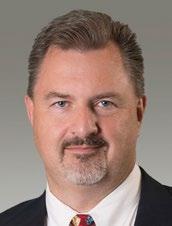

◆
ROB MCCONNELL is Vice President at WGI Parking Solutions and a member of IPMI’s Planning, Design, & Construction Committee. He can be reached at Rob. McConnell@wginc.com
PARKING-MOBILITY-MAGAZINE.ORG / SEPTEMBER 2023 / PARKING & MOBILITY 51
Parking minimums have long been a bone of contention for developers. They complain that the requirements can be onerous, leaving their developments with scores of unused parking spaces and unnecessarily driving up the cost of their projects.
Meet the members of the 2023–2024 Board of Directors, CAPP Certification Board, and APO Board

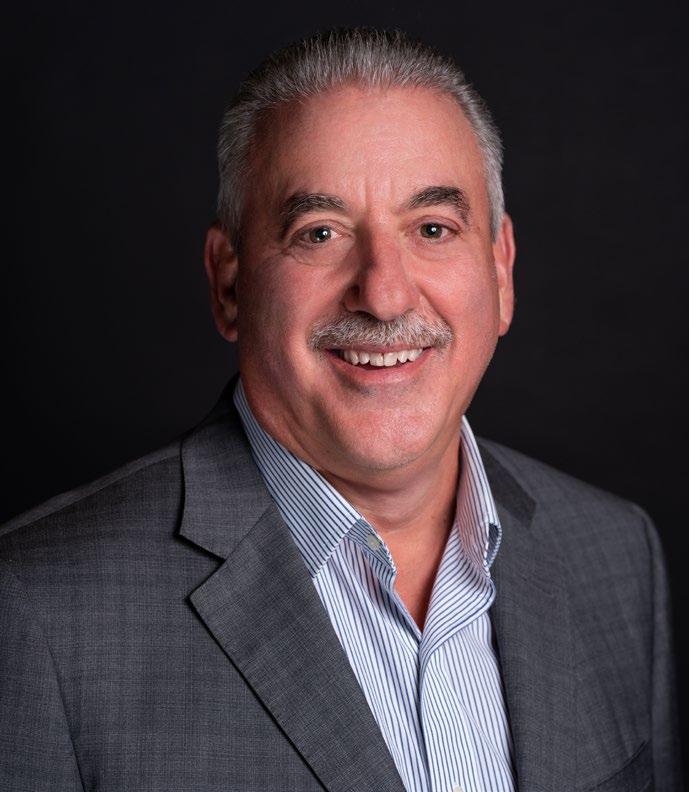
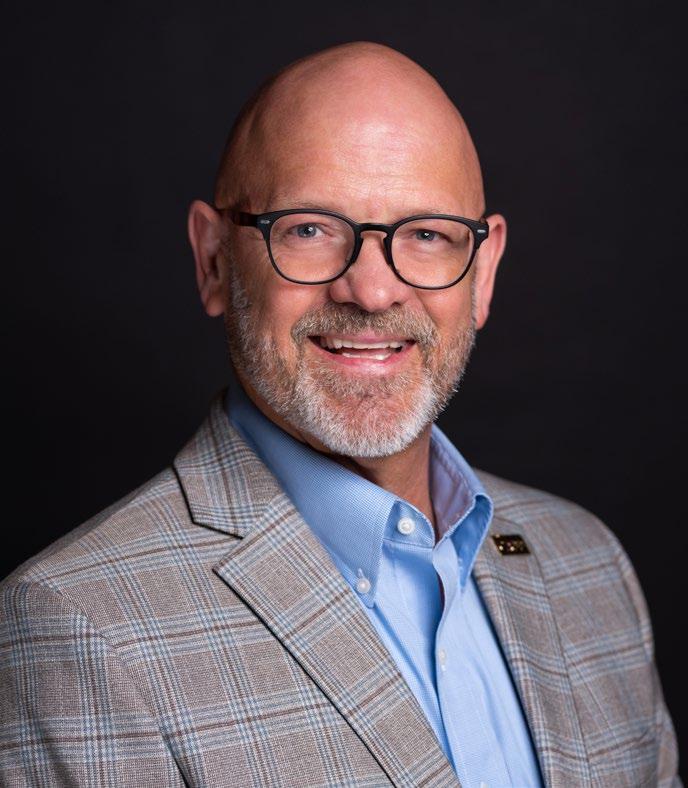
PRESENTS THE 2023–2024 Board of Directors
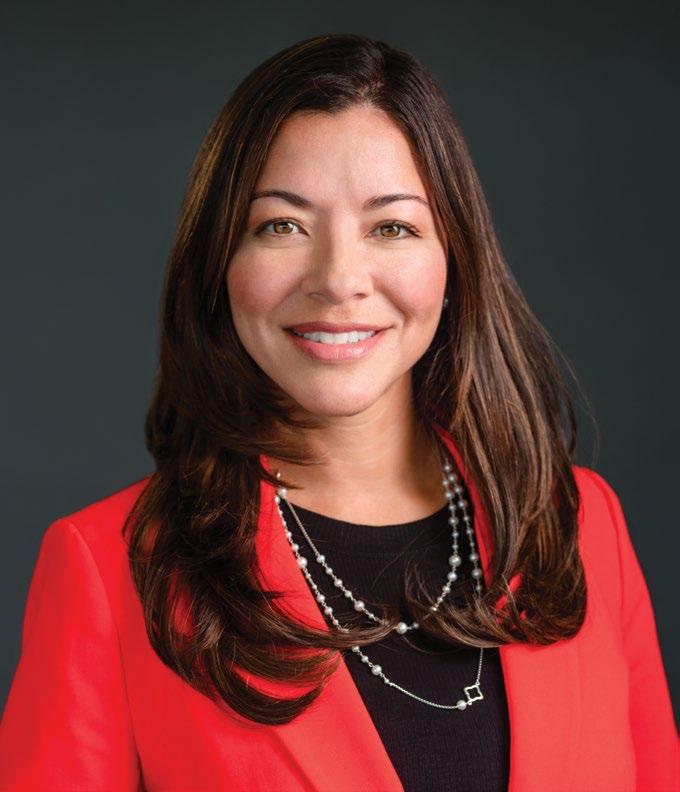
CHAIR-ELECT
TREASURER
IPMI Presents the 2023–2024 Boards
Gary A. Means, CAPP Executive Vice President, Pivot Parking Lexington, KY
CHAIR
David Onorato, CAPP Executive Director, Pittsburgh Parking Authority, Pittsburgh, PA
PAST CHAIR
Alejandra “Alex” Argudin, CAPP Chief Executive Officer, Miami Parking Authority, Miami, FL
Robert Ferrin, CAPP Senior Project Manager, Kimley-Horn, Columbus, OH
52 PARKING & MOBILITY / SEPTEMBER 2023 / PARKING-MOBILITY-MAGAZINE.ORG
BOARD MEMBERS
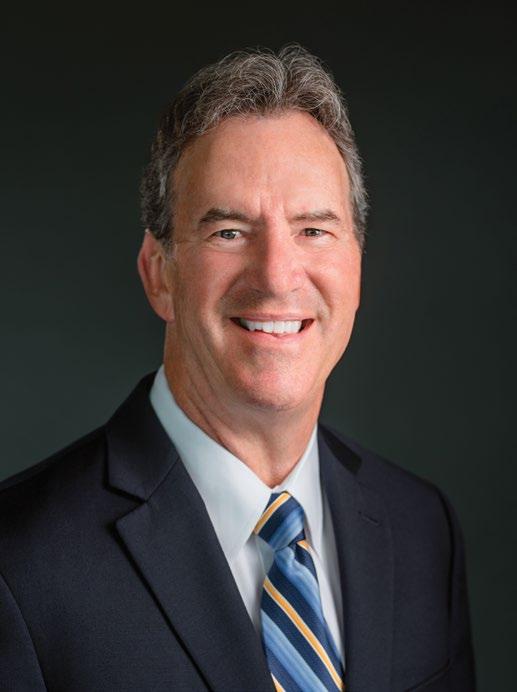


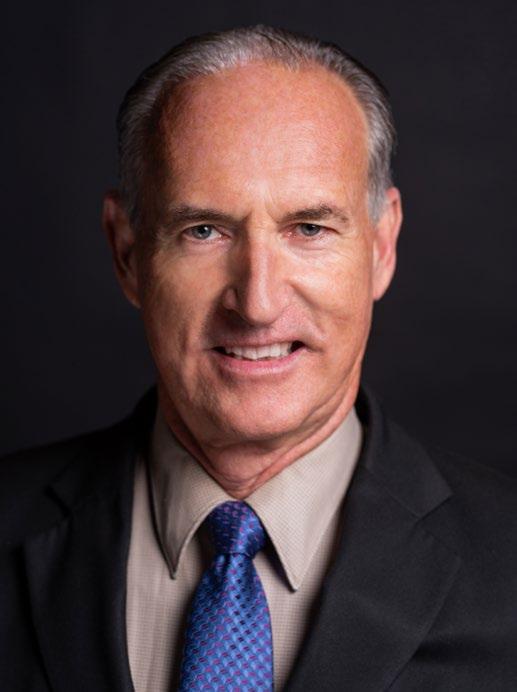
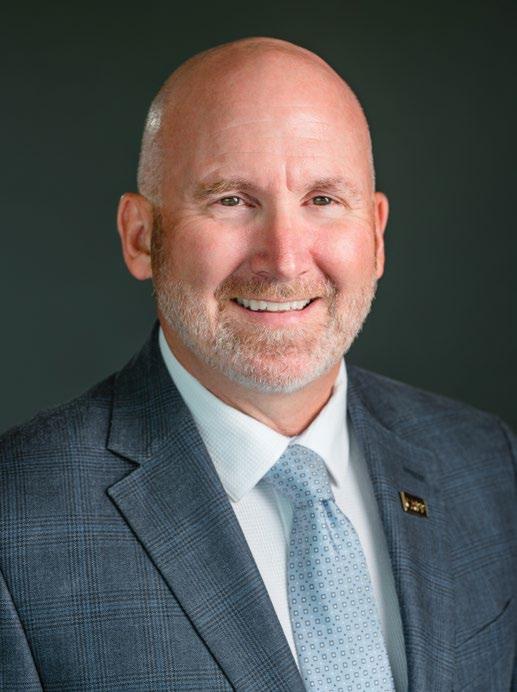
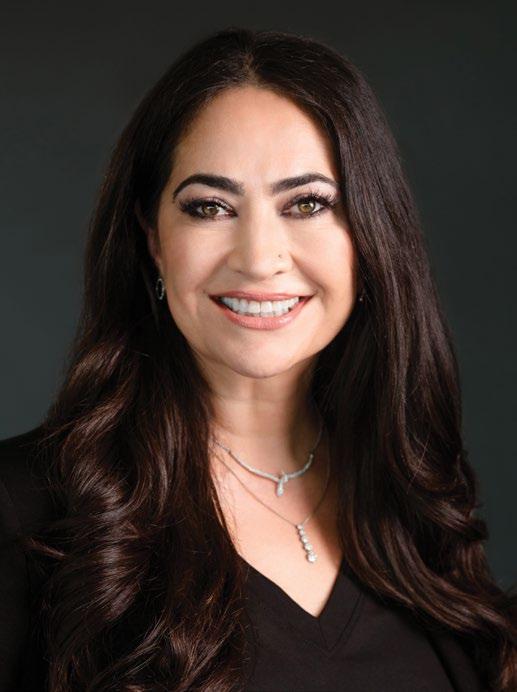
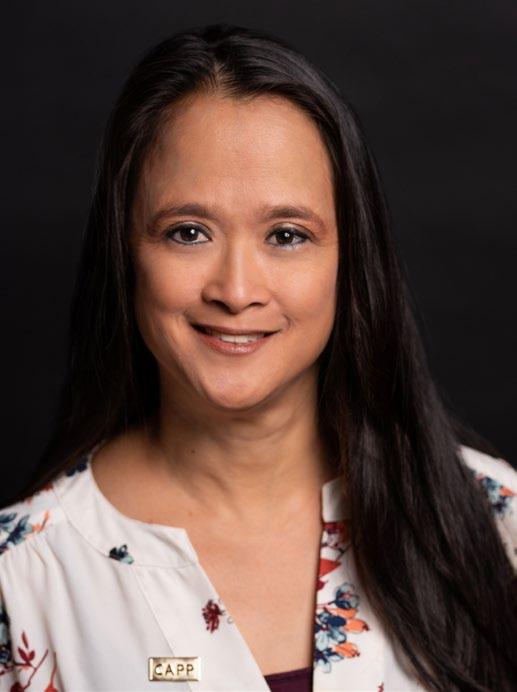
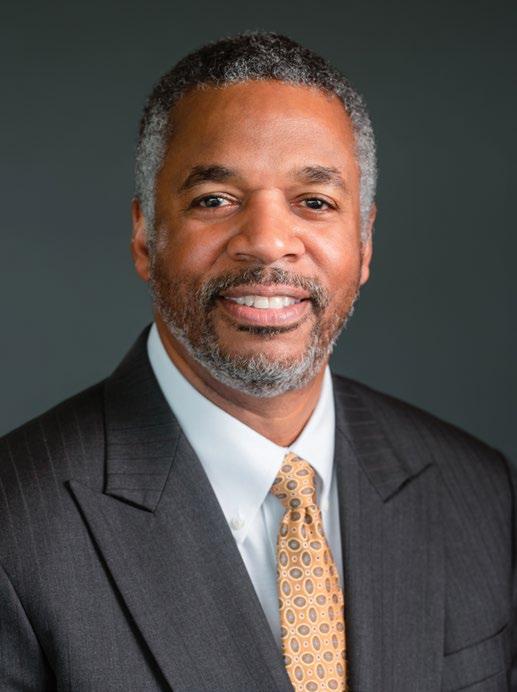
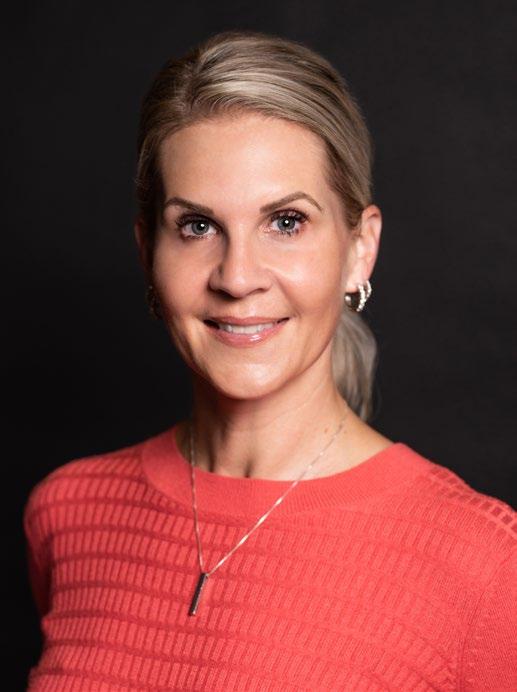
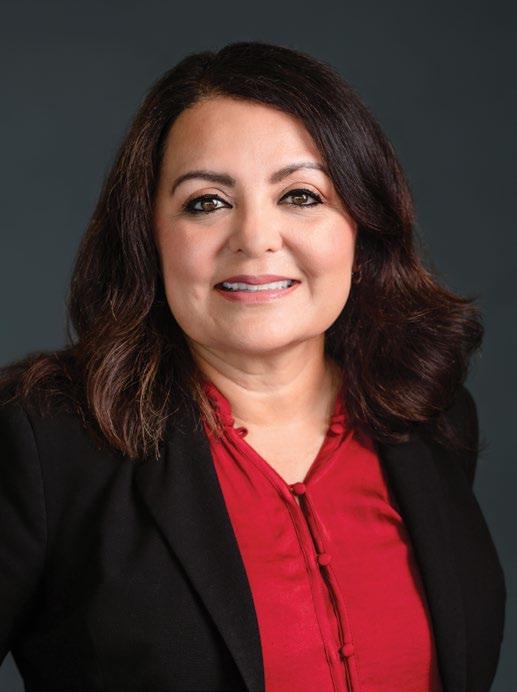
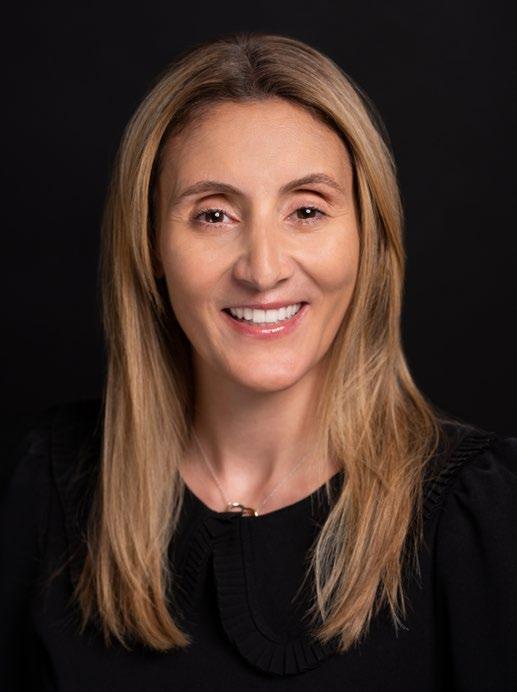
 Josh Cantor, CAPP Director of Parking & Transportation, George Mason University, Fairfax, VA
Pamela E. Chikhani, MSc General Manager, Secure Parking, UAE & Qatar
Marlene Cramer, CAPP Director of Transportation and Parking Services, California Polytechnic State University, San Luis Obispo, CA
Carmen Donnell, CAPP Managing Director, PayByPhone, Vancouver, British Columbia, Canada
Richard B. Easley, CAPP President, E-Squared Engineering, Ashburn, VA
Irma Henderson, CAPP Director of Transportation Services, University of California, Riverside, CA
Maria Irshad, CAPP Deputy Director, ParkHouston, Houston, TX
Casey Jones, CAPP Senior Director of Customer Success, FLASH, Boise, ID
Shawn McCormick Director, Parking Enforcement & Traffic, City and County of San Francisco, CA
Gabe Mendez Director of Transportation Operations, University of Wisconsin, Madison, WI
Tiffany R. Peebles Sr. Account Manager, ParkMobile, LLC, Louisville, KY
Shawn Conrad, CAE, CEO International Parking & Mobility Institute, Fredericksburg, VA
Josh Cantor, CAPP Director of Parking & Transportation, George Mason University, Fairfax, VA
Pamela E. Chikhani, MSc General Manager, Secure Parking, UAE & Qatar
Marlene Cramer, CAPP Director of Transportation and Parking Services, California Polytechnic State University, San Luis Obispo, CA
Carmen Donnell, CAPP Managing Director, PayByPhone, Vancouver, British Columbia, Canada
Richard B. Easley, CAPP President, E-Squared Engineering, Ashburn, VA
Irma Henderson, CAPP Director of Transportation Services, University of California, Riverside, CA
Maria Irshad, CAPP Deputy Director, ParkHouston, Houston, TX
Casey Jones, CAPP Senior Director of Customer Success, FLASH, Boise, ID
Shawn McCormick Director, Parking Enforcement & Traffic, City and County of San Francisco, CA
Gabe Mendez Director of Transportation Operations, University of Wisconsin, Madison, WI
Tiffany R. Peebles Sr. Account Manager, ParkMobile, LLC, Louisville, KY
Shawn Conrad, CAE, CEO International Parking & Mobility Institute, Fredericksburg, VA
PARKING-MOBILITY-MAGAZINE.ORG / SEPTEMBER 2023 / PARKING & MOBILITY 53
PRESENTS THE 2023–2024 CAPP Certification Board


CHAIR-ELECT

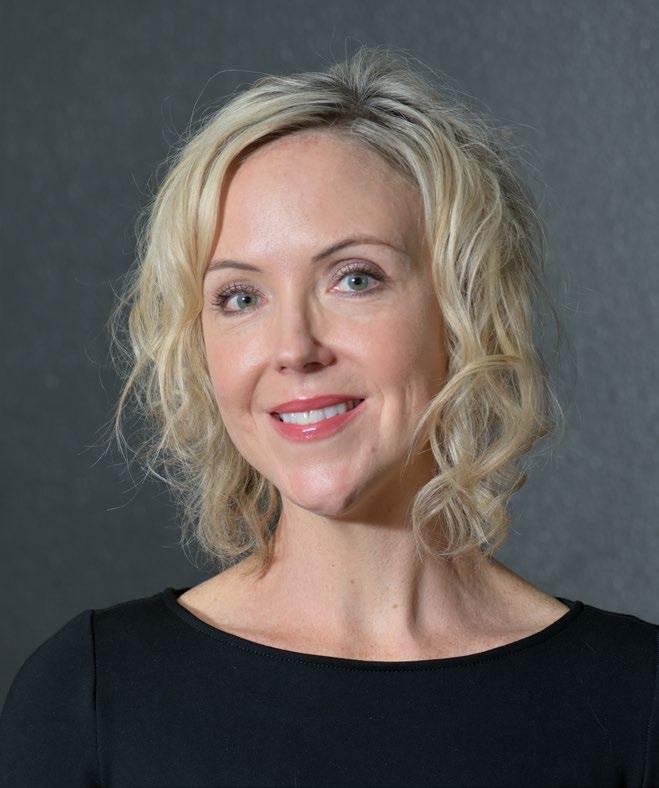
BOARD MEMBERS

 Hal King, CAPP Parking Manager, City of Lansing, MI
CHAIR
Gwendolyn Bolden, CAPP Director of Parking Management, Medical University of South Carolina, Charleston, SC
Isaiah R. Mouw, CAPP President–Municipal, Pave Mobility, Chattanooga, TN
PAST CHAIR
Vanessa Solesbee, CAPP Mobility Services Manager, Town of Estes Park, CO
Sam Veraldi, CAPP Director, Business Development - EV Charging, FLASH, Austin, TX
Hal King, CAPP Parking Manager, City of Lansing, MI
CHAIR
Gwendolyn Bolden, CAPP Director of Parking Management, Medical University of South Carolina, Charleston, SC
Isaiah R. Mouw, CAPP President–Municipal, Pave Mobility, Chattanooga, TN
PAST CHAIR
Vanessa Solesbee, CAPP Mobility Services Manager, Town of Estes Park, CO
Sam Veraldi, CAPP Director, Business Development - EV Charging, FLASH, Austin, TX
54 PARKING & MOBILITY / SEPTEMBER 2023 / PARKING-MOBILITY-MAGAZINE.ORG
Victor Hill, CAPP Mobility and Transportation Planner, Walker Consultants, Tampa, FL
PRESENTS THE 2022–2024 Accredited Parking Organization (APO) Board





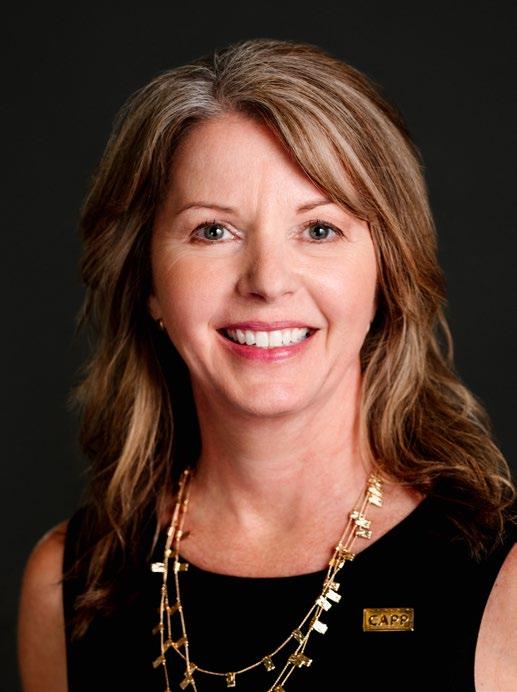
BOARD MEMBERS
 Christopher Austin, CAPP Director, Parking & Transportation Services, University at Buffalo, NY
Debbie Lollar, CAPP Executive Director, Texas A & M University—College Station, TX
Thuy Cobb, CAPP Parking Business System Administrator, DFW International Airport, Dallas, TX
Brett Munkel, CAPP Vice President, Healthcare and University Services, SP+, Alpharetta, GA
Steven Fernstrom Executive Director, Bethlehem Parking Authority , Bethlehem, PA
George Richardson, CAPP Manager, Transportation and Parking, UF Health Shands Hospital, Gainesville, FL
Yassir Jabbari, CAPP Operations Coordinator, University of California, Riverside, CA
Christopher Austin, CAPP Director, Parking & Transportation Services, University at Buffalo, NY
Debbie Lollar, CAPP Executive Director, Texas A & M University—College Station, TX
Thuy Cobb, CAPP Parking Business System Administrator, DFW International Airport, Dallas, TX
Brett Munkel, CAPP Vice President, Healthcare and University Services, SP+, Alpharetta, GA
Steven Fernstrom Executive Director, Bethlehem Parking Authority , Bethlehem, PA
George Richardson, CAPP Manager, Transportation and Parking, UF Health Shands Hospital, Gainesville, FL
Yassir Jabbari, CAPP Operations Coordinator, University of California, Riverside, CA
PARKING-MOBILITY-MAGAZINE.ORG / SEPTEMBER 2023 / PARKING & MOBILITY 55

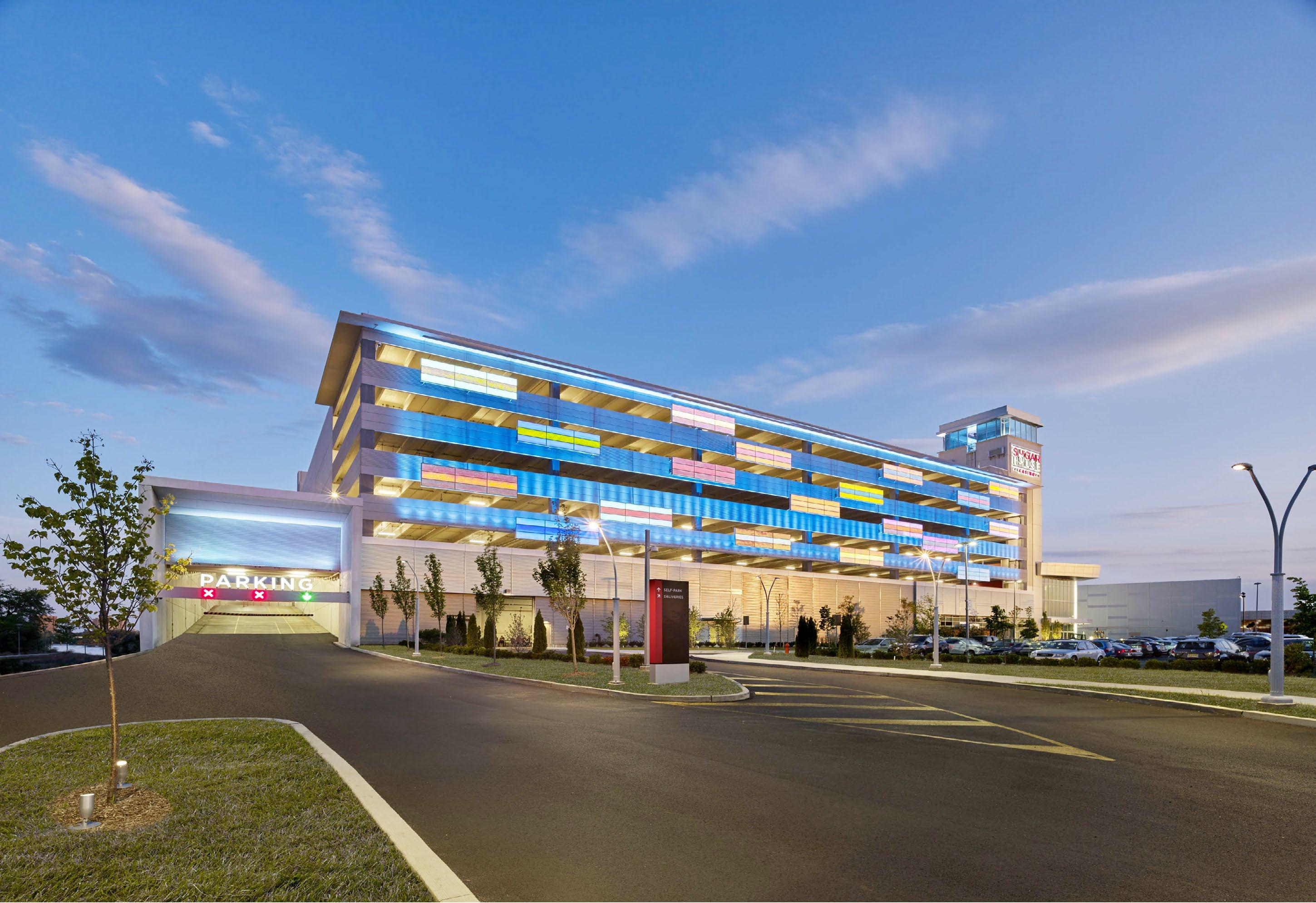
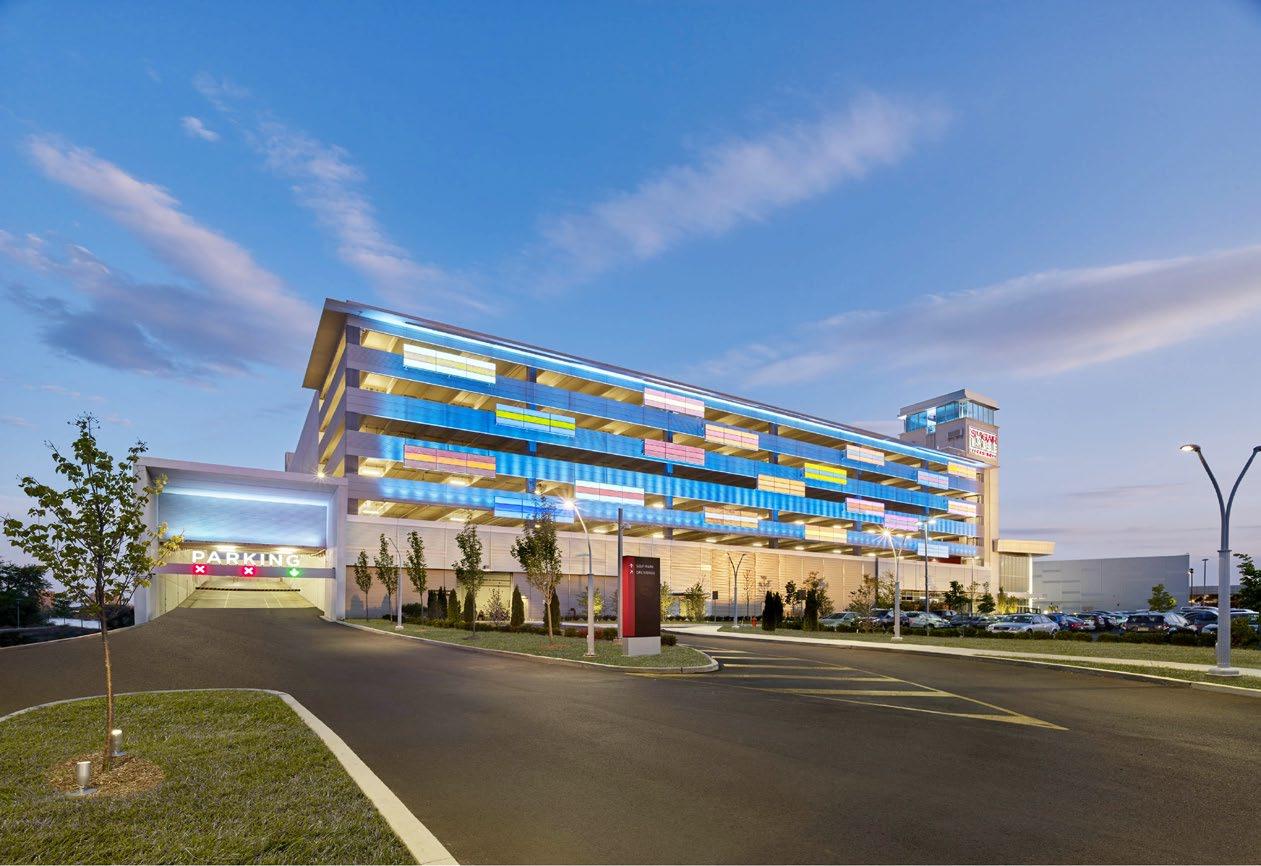


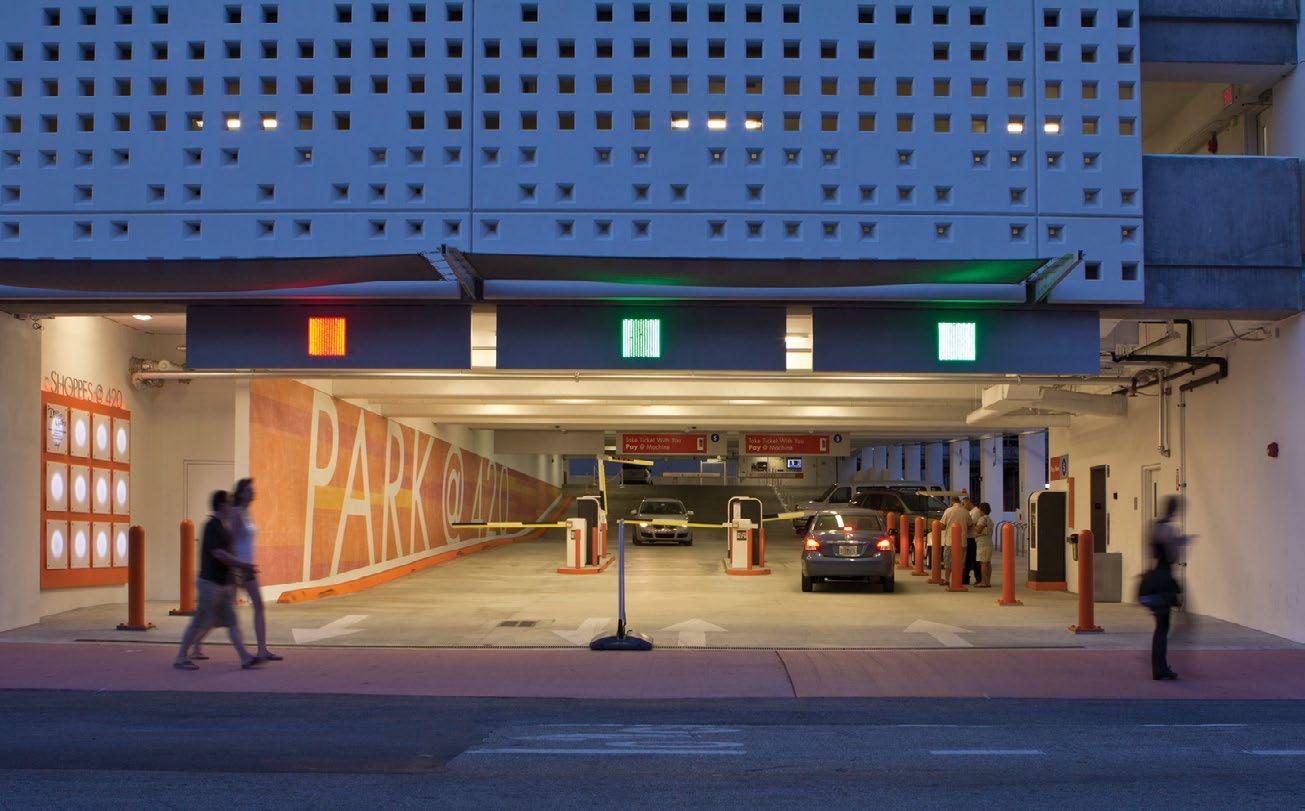
Kimley-Horn and Associates, Inc. kimley-horn.com/parking 919.653.6646 PARKING & MOBILITY CONSULTANTS 56 PARKING & MOBILITY / SEPTEMBER 2023 / PARKING-MOBILITY-MAGAZINE.ORG

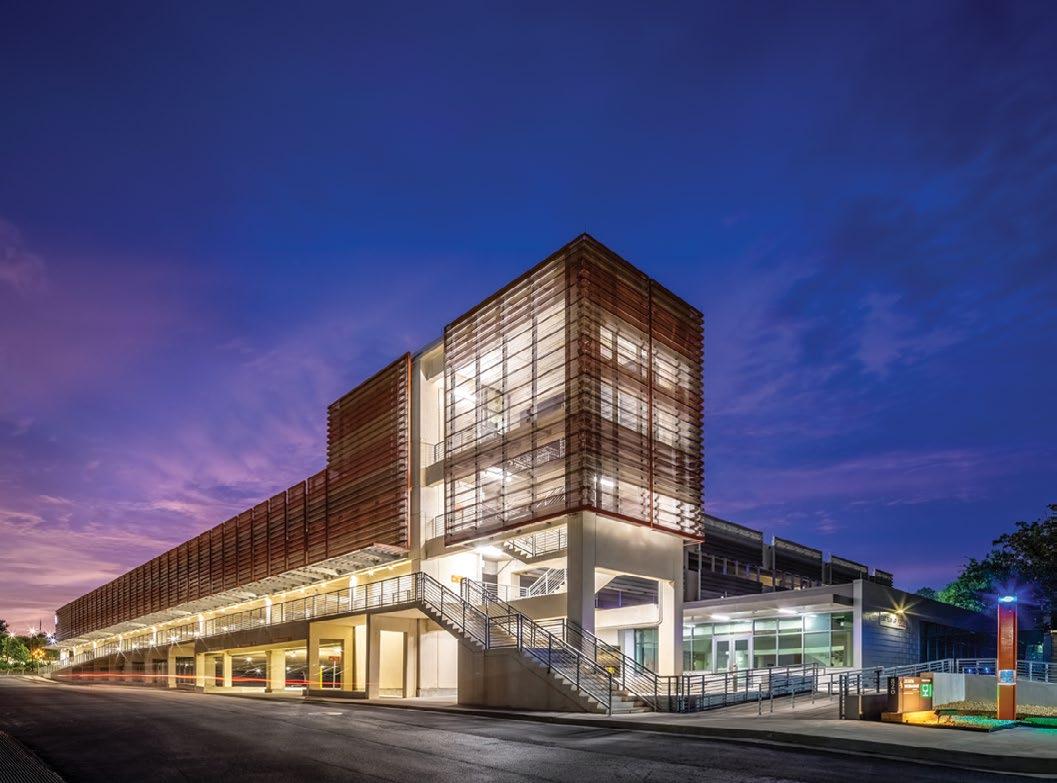


WALKERCONSULTANTS.COM 800.860.1579 PLAN. DESIGN. RENEW. South Gondola Lot Parking Structure Breckenridge, CO 2022 IPMI Award of Excellence LOOKING FOR MOORE TALENT Brian Lozano , PE, PMP 800.364.7300 parking@walterpmoore.com walterpmoore.com Parking, Transportation, and Mobility Planning Parking Design and Consulting Structural Engineering Structural Diagnostics Traffic Engineering Civil Engineering Intelligent Transportation Systems Systems Integration PARKING-MOBILITY-MAGAZINE.ORG / SEPTEMBER 2023 / PARKING & MOBILITY 57




Strategic Partner
Mouw
episodes
Tuesday at
a.m. Eastern. Listen on Spotify, Apple Podcasts, Google Podcasts, SoundCloud or
other major podcast provider. parkingcast.com THE PODCAST ADVERTISERS INDEX ABM Industries . . . . . . . . . . . . . . . . . . . . . 1 abm.com 866.201.9935 Hormann . . . . . . . . . . . . . . . . . . . . . . . . . . 21 hormann.us 800.365.3667 IPS Group Inc. . . . . . . . . . . . . . . . . . . . . .C2 ipsgroupinc.com 858.404.0607 Kimley-Horn and Associates, Inc. . . . . . . . . . . . . . . . 5, 56 kimley-horn.com/parking 919.653.6646 Propark . . . . . . . . . . . . . . . . . . . . . . . .15, 22 propark.com/acquisitions 860.527.2378 Scheidt & Bachmann . . . . . . . . . . . . . . . . 7 scheidt-bachmann-usa.com/en 781.272.1644 T2 Systems, Inc. . . . . . . . . . . . . . . . . . . . 17 t2systems.com 800.434.1502 THA Consulting. . . . . . . . . . . . . . . . . . . .56 tha-consulting.com 484.342.0200 Toledo Ticket Technologies . . . . . . . . 11 toledoticket.com 800.533.6620 Walker Consultants . . . . . . . . . . . . . . . . 57 walkerconsultants.com 800.860.1579 Walter P Moore . . . . . . . . . . . . . . . . .19, 57 walterpmoore.com 800.364.7300 WGI . . . . . . . . . . . . . . . . . . . . . . . . . . . . . .56 WGInc.com 866.909.2220 58 PARKING & MOBILITY / SEPTEMBER 2023 / PARKING-MOBILITY-MAGAZINE.ORG
A podcast about parking, mobility, and the people who make it all go. Hosted by Isaiah
with new
every other
10
any
Save e date!








Call for Presentations
Differentiate Yourself & Your Organization
Submit your presentation for the 2024 IPMI Parking & Mobility Conference & Expo.
Position yourself as a thought leader and share your expertise to move the industry forward.

www.parking-mobility.org
SEPTEMBER 13
IPMI Webinar
EV Readiness: Develop & Execute an Effective Plan in your Parking Operation
SEPTEMBER 19, 21, 26, 28
Online, Instructor-Led Course Parksmart Advisor Training
SEPTEMBER 20
Free Virtual Shoptalk University Shoptalk: Guiding Your Team to Serve Your Patrons
OCTOBER 5
Free Member Chat
CAPP
OCTOBER 10
Free Virtual Frontline Training Implementing License Plate Recognition on Campus
OCTOBER 17
Online, Instructor-Led Course
Accredited Parking Organization (APO) Site Reviewer Renewal Training
OCTOBER 18
Free IPMI Municipal Member Roundtable
Virtual Roundtable limited to members from cities and municipalities.
OCTOBER 19
Free Member Chat New Members
OCTOBER 23
Virtual Symposium Accessibility & Transportation Equity
NOVEMBER 2
Free Member Chat
APO
NOVEMBER 8
IPMI Webinar
How Parking fits with Transportation: Path to Greater Mobility in Nashville
NOVEMBER 15
Free Virtual Shoptalk
Airport Shoptalk: Operating Large-Scale Airport Operations
DECEMBER 12
Free Virtual Frontline Training
Procurement—Best Practices & Lessons Learned
FEBRUARY 28 - MARCH 1
2024 Leadership Summit Atlantic Beach, FL
JUNE 9-11
2024 IPMI Parking & Mobility Conference & Expo Columbus, OH
Stay up to date on industry events and activities! Visit parking-mobility.org/ calendar for the latest updates and additions.
State and Regional Events Calendar

SEPTEMBER 6–8
Pacific Intermountain Parking & Transportation Association (PIPTA)
Annual Conference & Expo Seattle, WA
SEPTEMBER 19–22
Carolinas Parking & Mobility Association (CPMA)
Annual Conference & Expo Myrtle Beach, SC
OCTOBER 1–4
Campus Parking and Transportation Association (CPTA) Annual Conference Columbus, OH
OCTOBER 23–25
Southwest Parking & Transportation Association (SWPTA) Annual Conference
Las Vegas, NV
OCTOBER 23–26
Parking Association of the Virginias Williamsburg, VA
NOVEMBER 7–9
California Mobility and Parking Association (CMPA) Annual Conference & Tradeshow
San Jose, CA
CALENDAR
2023
2024
PARKING-MOBILITY-MAGAZINE.ORG / SEPTEMBER 2023 / PARKING & MOBILITY 61




 By Mike Bourre
By Mike Bourre



 By Rajiv Jain and Joe Parker
By Rajiv Jain and Joe Parker


 By Madison Bordon
By Madison Bordon
























 By Jim Burness
By Jim Burness








 By Heather Matthews, CAPP
By Heather Matthews, CAPP












 By Andrew Hill
By Andrew Hill








 2023 NEPC Vanguard Award Winners: Carey Redd II, CAPP (left) and Norman Goldman (right)
Cowley
Rodriguez of ZipBy
John
2023 NEPC Vanguard Award Winners: Carey Redd II, CAPP (left) and Norman Goldman (right)
Cowley
Rodriguez of ZipBy
John





























 By Rajiv Jain and Joe Parker
By Rajiv Jain and Joe Parker
























 Josh Cantor, CAPP Director of Parking & Transportation, George Mason University, Fairfax, VA
Pamela E. Chikhani, MSc General Manager, Secure Parking, UAE & Qatar
Marlene Cramer, CAPP Director of Transportation and Parking Services, California Polytechnic State University, San Luis Obispo, CA
Carmen Donnell, CAPP Managing Director, PayByPhone, Vancouver, British Columbia, Canada
Richard B. Easley, CAPP President, E-Squared Engineering, Ashburn, VA
Irma Henderson, CAPP Director of Transportation Services, University of California, Riverside, CA
Maria Irshad, CAPP Deputy Director, ParkHouston, Houston, TX
Casey Jones, CAPP Senior Director of Customer Success, FLASH, Boise, ID
Shawn McCormick Director, Parking Enforcement & Traffic, City and County of San Francisco, CA
Gabe Mendez Director of Transportation Operations, University of Wisconsin, Madison, WI
Tiffany R. Peebles Sr. Account Manager, ParkMobile, LLC, Louisville, KY
Shawn Conrad, CAE, CEO International Parking & Mobility Institute, Fredericksburg, VA
Josh Cantor, CAPP Director of Parking & Transportation, George Mason University, Fairfax, VA
Pamela E. Chikhani, MSc General Manager, Secure Parking, UAE & Qatar
Marlene Cramer, CAPP Director of Transportation and Parking Services, California Polytechnic State University, San Luis Obispo, CA
Carmen Donnell, CAPP Managing Director, PayByPhone, Vancouver, British Columbia, Canada
Richard B. Easley, CAPP President, E-Squared Engineering, Ashburn, VA
Irma Henderson, CAPP Director of Transportation Services, University of California, Riverside, CA
Maria Irshad, CAPP Deputy Director, ParkHouston, Houston, TX
Casey Jones, CAPP Senior Director of Customer Success, FLASH, Boise, ID
Shawn McCormick Director, Parking Enforcement & Traffic, City and County of San Francisco, CA
Gabe Mendez Director of Transportation Operations, University of Wisconsin, Madison, WI
Tiffany R. Peebles Sr. Account Manager, ParkMobile, LLC, Louisville, KY
Shawn Conrad, CAE, CEO International Parking & Mobility Institute, Fredericksburg, VA





 Hal King, CAPP Parking Manager, City of Lansing, MI
CHAIR
Gwendolyn Bolden, CAPP Director of Parking Management, Medical University of South Carolina, Charleston, SC
Isaiah R. Mouw, CAPP President–Municipal, Pave Mobility, Chattanooga, TN
PAST CHAIR
Vanessa Solesbee, CAPP Mobility Services Manager, Town of Estes Park, CO
Sam Veraldi, CAPP Director, Business Development - EV Charging, FLASH, Austin, TX
Hal King, CAPP Parking Manager, City of Lansing, MI
CHAIR
Gwendolyn Bolden, CAPP Director of Parking Management, Medical University of South Carolina, Charleston, SC
Isaiah R. Mouw, CAPP President–Municipal, Pave Mobility, Chattanooga, TN
PAST CHAIR
Vanessa Solesbee, CAPP Mobility Services Manager, Town of Estes Park, CO
Sam Veraldi, CAPP Director, Business Development - EV Charging, FLASH, Austin, TX






 Christopher Austin, CAPP Director, Parking & Transportation Services, University at Buffalo, NY
Debbie Lollar, CAPP Executive Director, Texas A & M University—College Station, TX
Thuy Cobb, CAPP Parking Business System Administrator, DFW International Airport, Dallas, TX
Brett Munkel, CAPP Vice President, Healthcare and University Services, SP+, Alpharetta, GA
Steven Fernstrom Executive Director, Bethlehem Parking Authority , Bethlehem, PA
George Richardson, CAPP Manager, Transportation and Parking, UF Health Shands Hospital, Gainesville, FL
Yassir Jabbari, CAPP Operations Coordinator, University of California, Riverside, CA
Christopher Austin, CAPP Director, Parking & Transportation Services, University at Buffalo, NY
Debbie Lollar, CAPP Executive Director, Texas A & M University—College Station, TX
Thuy Cobb, CAPP Parking Business System Administrator, DFW International Airport, Dallas, TX
Brett Munkel, CAPP Vice President, Healthcare and University Services, SP+, Alpharetta, GA
Steven Fernstrom Executive Director, Bethlehem Parking Authority , Bethlehem, PA
George Richardson, CAPP Manager, Transportation and Parking, UF Health Shands Hospital, Gainesville, FL
Yassir Jabbari, CAPP Operations Coordinator, University of California, Riverside, CA























